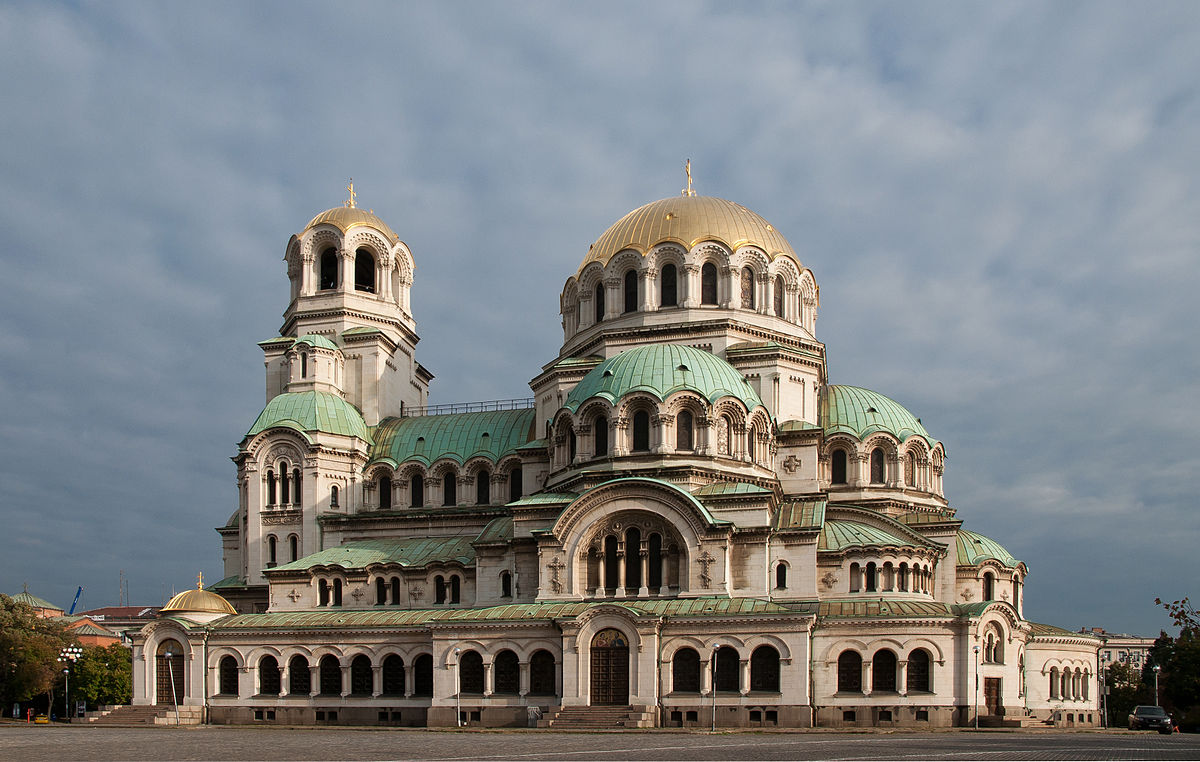From Istanbul’s Blue Mosque to Paris’s Notre Dame, religious monuments have awed and amazed the masses for thousands of years, no matter the religion.
According to Wikipedia, there are 3,380 Catholic cathedrals in the world: 3,030 cathedrals 306 Co-cathedrals, and 44 Pro-cathedrals, predominantly in countries with a significant Roman Catholic population, including Italy, Brazil, the United States, India, France, Mexico and Spain. With many of these establishments being around for hundreds of years, it can be hard to pick a favorite.
We’ve gathered the top 40 most beautiful cathedrals (and churches) in the world:
40.) Meteora Monasteries
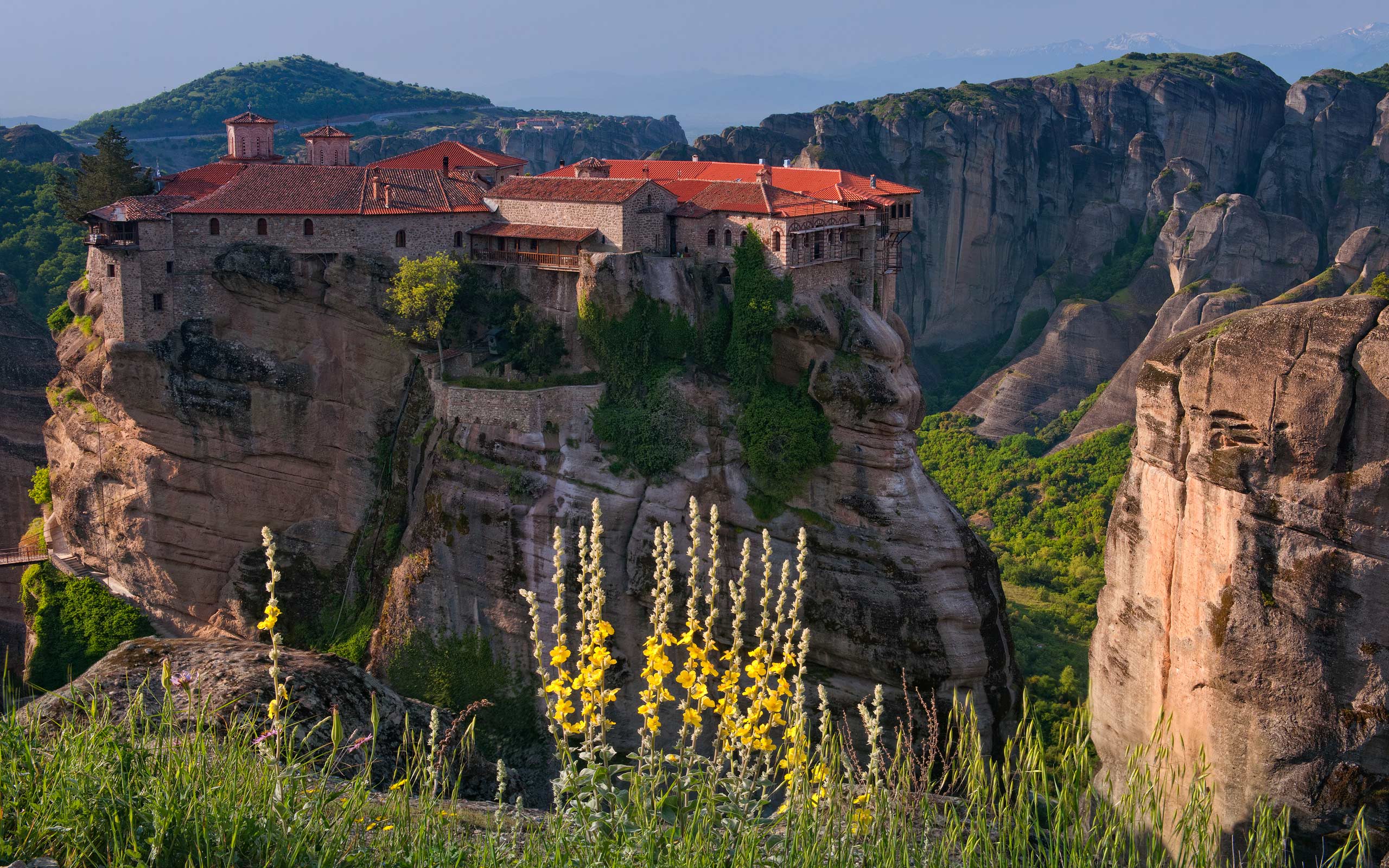
- Location: Thessaly, Greece
- Year built: Unknown
- Designated as world heritage site: 1988
This rock formation in central Greece hosting one of the largest and most precipitously built complexes of Eastern Orthodox monasteries, second in importance only to Mount Athos. The exact date of the establishment of the monasteries is unknown. By the late 11th and early 12th centuries, a rudimentary monastic state had formed called the Skete of Stagoi and was centered around the still-standing church of Theotokos (mother of God).
By the end of the 12th century, an ascetic community had flocked to Meteora. The six monasteries are built on immense natural pillars and hill-like rounded boulders that dominate the local area. Meteora is included on the UNESCO World Heritage List under criteria I, II, IV, V and VII.
39.) Grundtvig Church
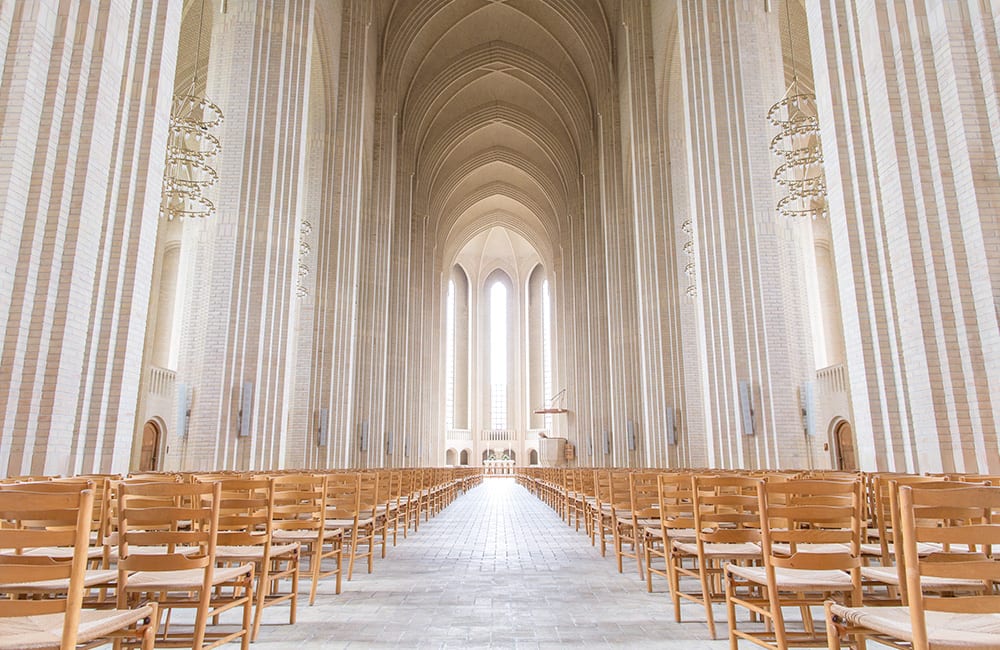
- Location: Copenhagen, Denmark
- Year built: 1921
The foundation of the new church was only laid after World War I, on September 8, 1921, Grundtvig’s birthday. Building took place mainly from 1921 to 1926 when the tower section was completed, leading to the initial inauguration of the so-called Tower Church in 1927. It is a rare example of expressionist church architecture. Due to its unusual appearance, it is one of the best known churches in the city. The most striking feature of the building is its west facade, reminiscent of a west work or of the exterior of a church organ. It includes the 160 feet tall bell tower.
The church has two organs. The one on the north side of the nave near the chancel was built in 1940 by Marcussen and Søn, the facade being designed by Kaare Klint. It has 14 stops, two manuals and a pedalboard. The much larger Marcussen instrument at the western end of the nave was added in 1965 with a facade designed by Kaare Klint’s son, Esben Klint. It has 55 stops, four manuals and a pedalboard. The largest of its pipes weighs 937 lbs and, with a length of 32 feet, is the longest organ pipe in Scandinavia.
38.) Borgund Stave Church
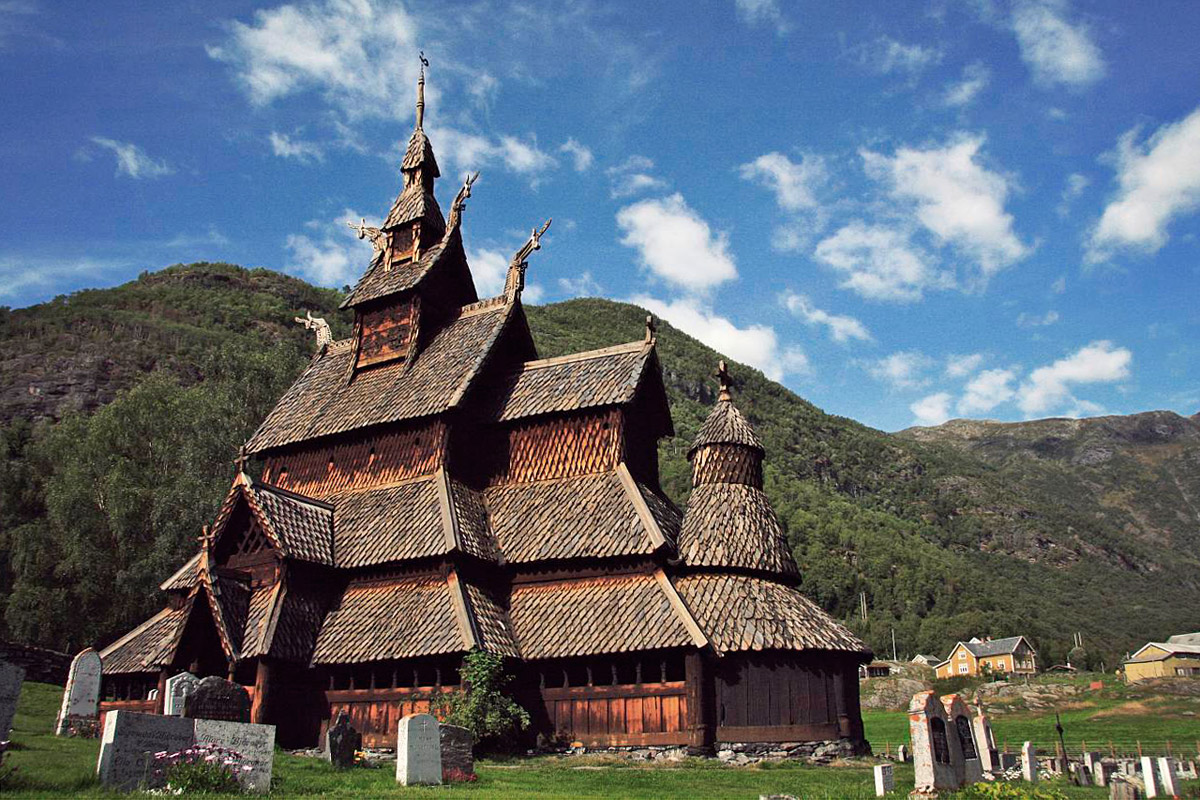
- Location: Borgund, Norway
- Year built: Between 1180-1250
This was built sometime between 1180 and 1250 AD with later additions and restorations. Its walls are formed by vertical wooden boards, or staves, hence the name “stave church.” No longer regularly used for church functions, it is now a museum run by the Society for the Preservation of Ancient Norwegian Monuments. The floor plan of this church resembles that of a central plan, double-shelled Greek cross with an apse attached to one end in place of the fourth arm. The entries to the church are in the three arms of the almost-cross.
A new Borgund Church was built in 1868 right next to the old church, and the old church has not been in ordinary use since that year. Borgund Stave Church was bought by the Society for the Preservation of Ancient Norwegian Monuments in 1877. The first guidebook in English for the stave church was published in 1898.
37.) Wieskirche
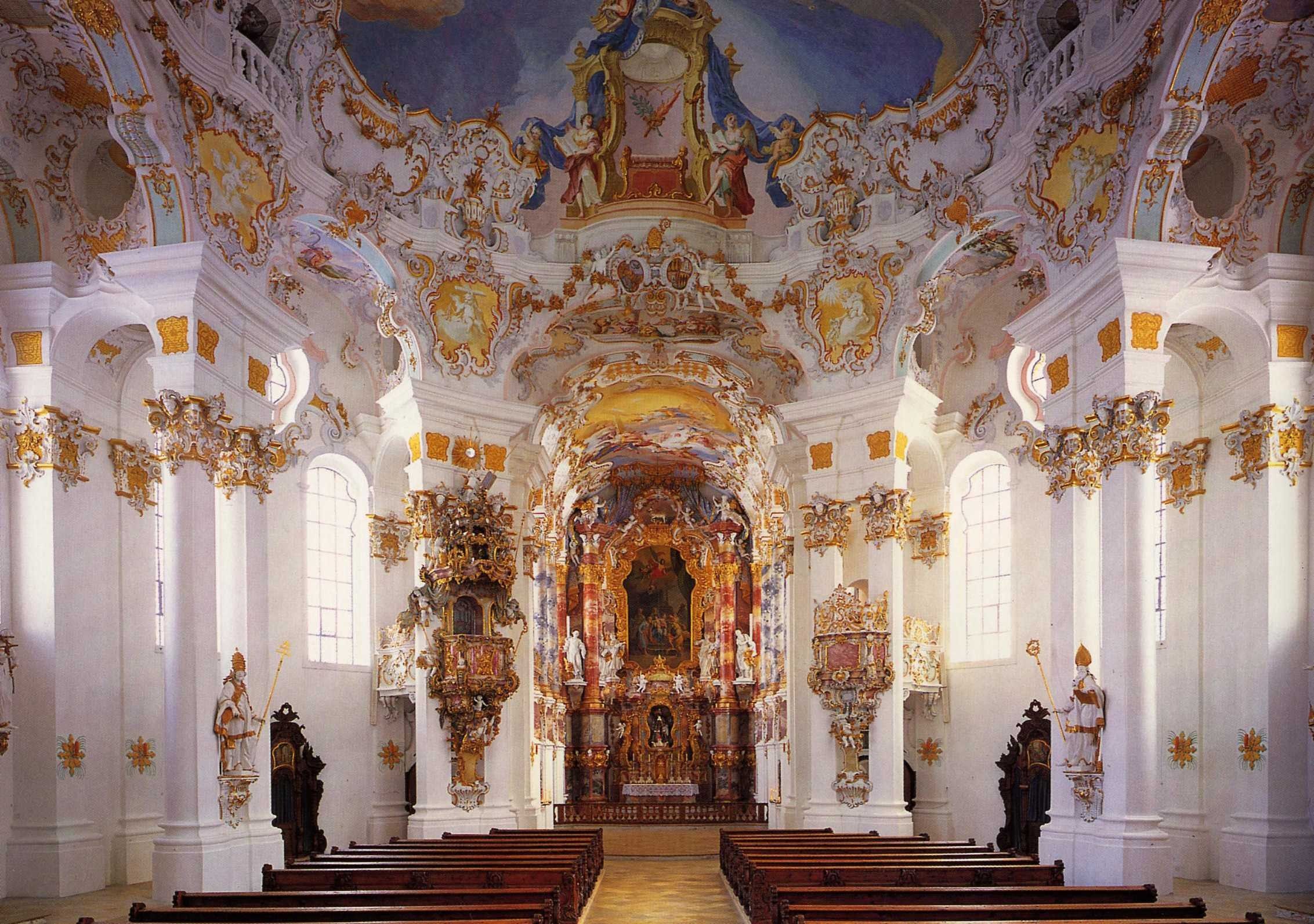
- Location: Steingaden, Germany
- Year built: 1754
It is an oval rococo church, designed in the late 1740s by brothers J. B. and Dominikus Zimmermann, the latter of whom lived nearby for the last eleven years of his life. Construction took place between 1745 and 1754, and the interior was decorated with frescoes and with stuccowork in the tradition of the Wessobrunner School.
There is a popular belief that the Bavarian government planned to sell or demolish the rococo masterpiece during the secularization of Bavaria at the beginning of the 19th century, and that only protests from the local farmers saved it from destruction.
The Wieskirche was added to the UNESCO World Heritage List in 1983 and underwent extensive restoration between 1985 and 1991.
36.) St Patrick’s Cathedral
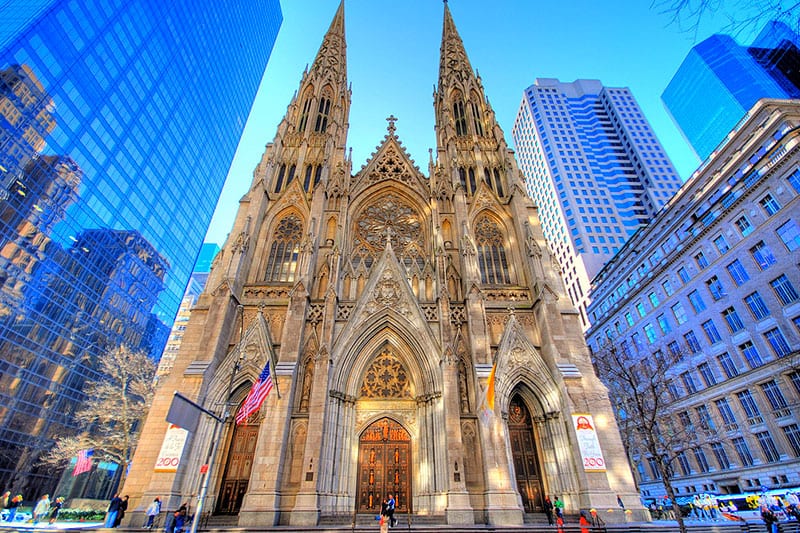
- Location: New York, New York
- Year built: 1878
The cathedral was completed in 1878 and dedicated on May 25, 1879, its huge proportions dominating the midtown of that time. It is considered one of the most visible symbols of Roman Catholicism in New York City and the United States. The cathedral is also featured in the 1990 film Gremlins 2: The New Batch.
In 1927 and 1931, the cathedral was renovated, which included enlarging the sanctuary and installing the great organ. The cathedral and associated buildings were declared a National Historic Landmark in 1976. An extensive restoration of the cathedral was begun in 2012 and lasted 3 years at a cost of $177 million. The restoration was completed by September 17, 2015, before Pope Francis visited the cathedral on September 24 and 25, 2015. The restoration cleaned the exterior marble, repaired stained glass windows, and painted the ceiling, repaired the flooring and steps, among many restorations.
35.) Subotica Synagogue
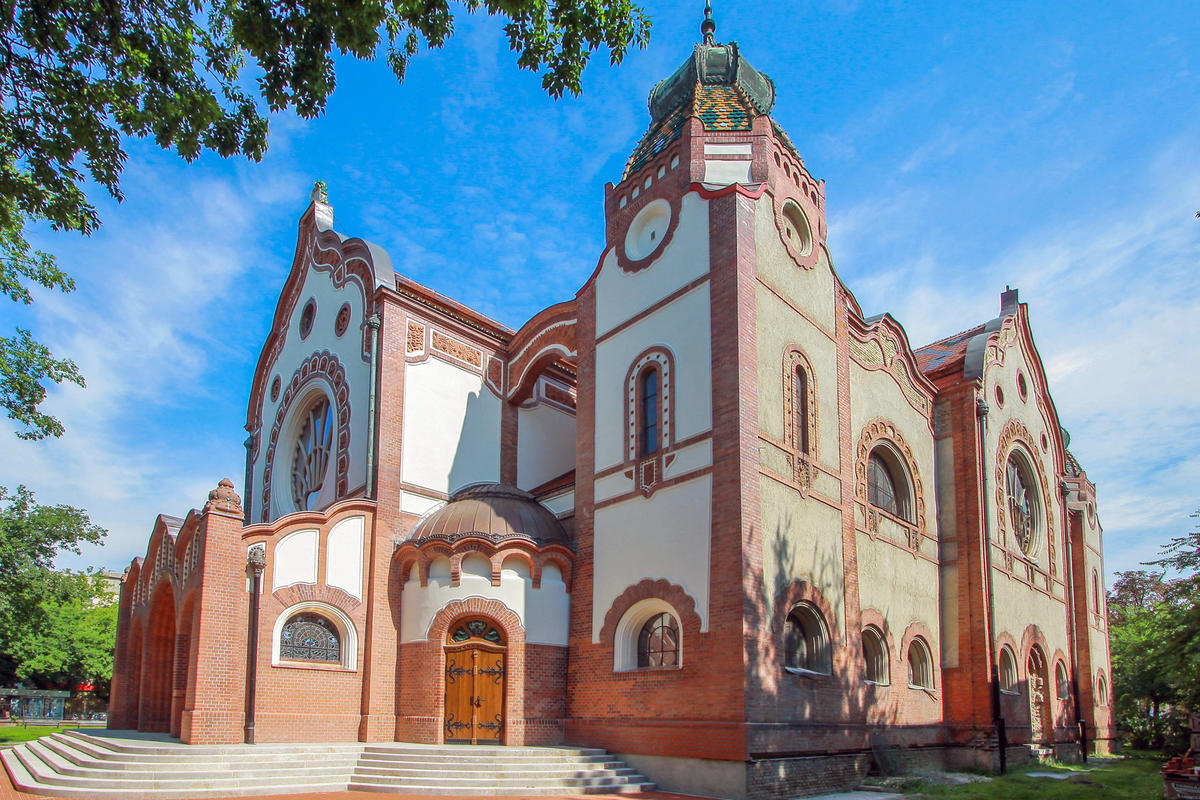
- Location: Subotica, Serbia
- Year built: 1902
It was built in 1901-1902 during the administration of the Kingdom of Hungary (part of Austria-Hungary). It is one of the finest surviving pieces of religious architecture in the art nouveau style. The synagogue of Subotica is the only surviving Hungarian art nouveau Jewish place of worship in the world.
Besides lending the synagogue a distinct double identity in architectural terms, Jakab and Komor created a new space-conception of synagogue architecture in Hungary and deployed modern steel structure as well as an advanced technique of vaulting. Unlike period synagogues in Hungary that featured a predominantly basilical arrangement with a nave and two aisles, with or without a dome, this synagogue achieves a unified, tent-like central space under the sun, painted in gold on the apex of the dome. The women’s gallery and the dome are supported by four pairs of steel pillars covered with gypsum with a palm leaf relief.
34.) Church of Mary Magdalene
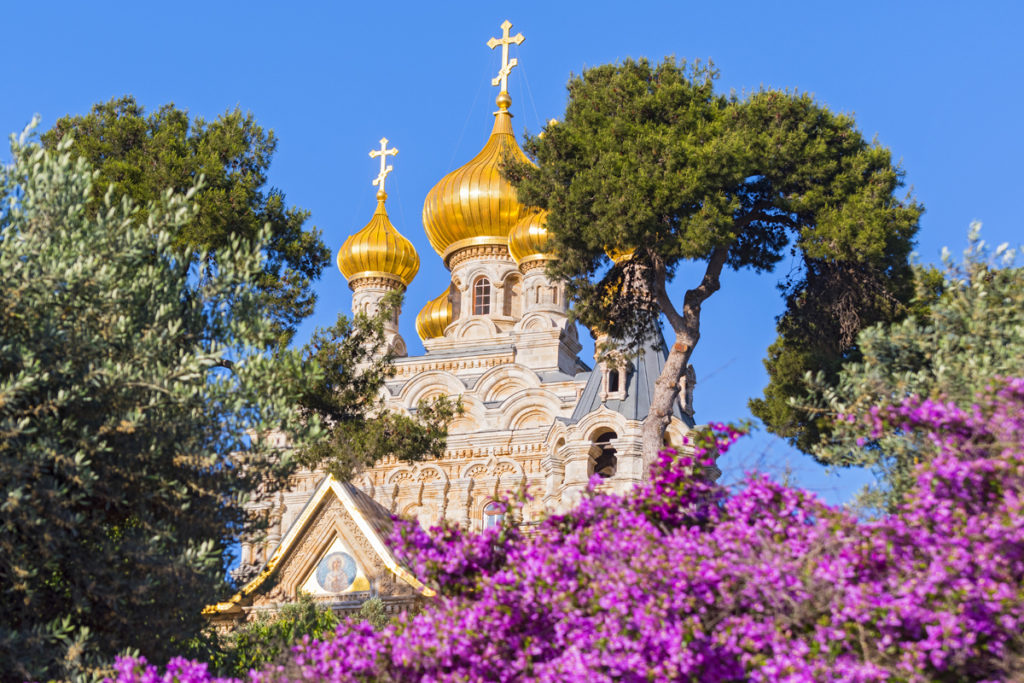
Shutterstock
- Location: Jerusalem, Israel
- Year built: 1886
The Church of Mary Magdalene is a Russian Orthodox church located on the Mount of Olives, near the Garden of Gethsemane in East Jerusalem. The church was built in 1886 by Tsar Alexander III to honor his mother, Empress Maria Alexandrovna of Russia. It was constructed to David Grimm’s design in the traditional tented roof style popular in 16th- and 17th-century Russia, and includes seven distinctive, gilded onion domes.
In the 1930s, Princess Alice of Battenberg, mother of the Duke of Edinburgh, visited the church and asked to be buried near her aunt, the Grand-Duchess Elizabeth. In 1969, she died at Buckingham Palace. In 1988, her remains were transferred to a crypt below the church.
33.) Milan Cathedral (Duomo di Milano)
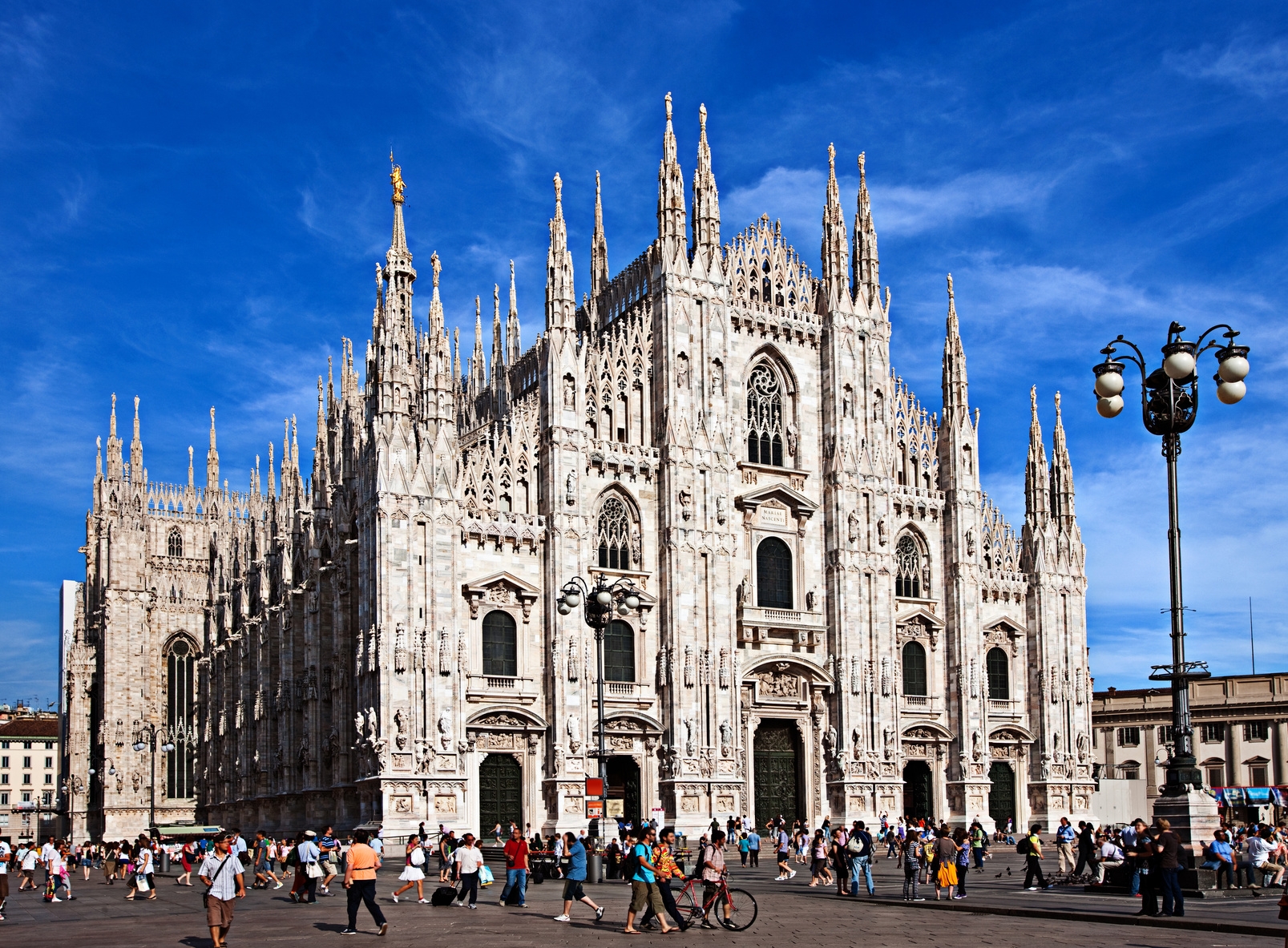
- Location: Milan, Italy
- Year built: 1386
The cathedral took nearly six centuries to complete. It is the largest church in Italy (the larger St. Peter’s Basilica is in the State of Vatican City) and the third largest in the world. In 1386, Archbishop Antonio da Saluzzo began construction of the cathedral. Before actual work began, three main buildings were demolished: the palace of the Archbishop, the Ordinari Palace and the Baptistry of St. Stephen at the Spring, while the old church of Sta. Maria Maggiore was exploited as a stone quarry. Enthusiasm for the immense new building soon spread among the population, and the shrewd Gian Galeazzo, together with his cousin the archbishop, collected large donations for the work-in-progress.
The roof is open to tourists (for a fee), which allows many a close-up view of some spectacular sculpture that would otherwise be unappreciated. The roof of the cathedral is renowned for the forest of openwork pinnacles and spires, set upon delicate flying buttresses.
Oscar Wilde visited Milan in June 1875. In a letter to his mother he wrote: “The Cathedral is an awful failure. Outside the design is monstrous and inartistic. The over-elaborated details stuck high up where no one can see them; everything is vile in it; it is, however, imposing and gigantic as a failure, through its great size and elaborate execution.”
32.) Santiago de Compostela
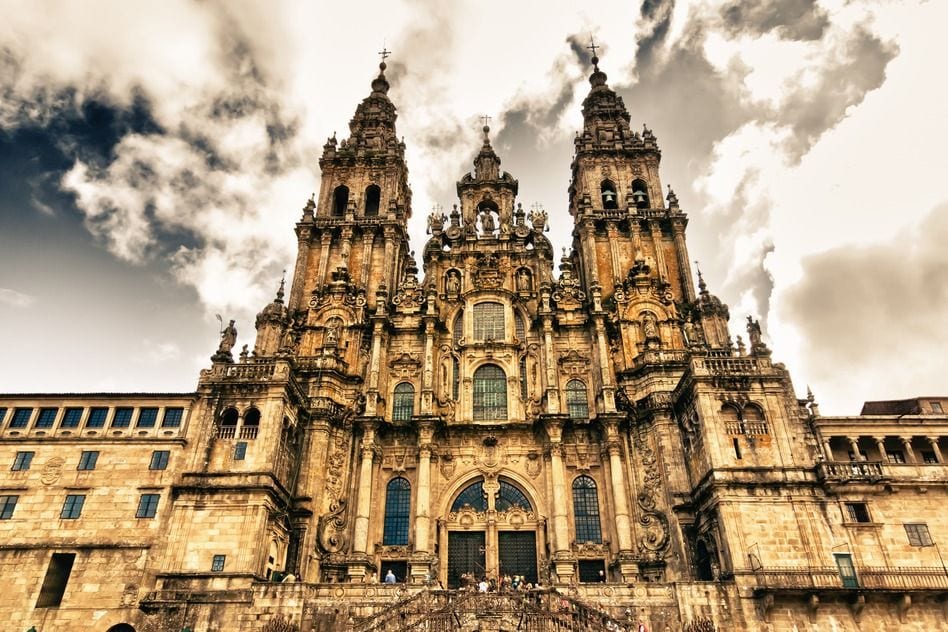
- Location: Galicia, Spain
- Year built: 1075
Construction of the present cathedral began in 1075 under the reign of Alfonso VI of Castile (1040–1109) and the patronage of bishop Diego Peláez. The cathedral has historically been a place of pilgrimage on the Way of St. James since the Early Middle Ages, and marks the traditional end of the pilgrimage route.
It was destroyed in the late 10th century and then completely rebuilt in the next century. In 1985 it became a UNESCO World Heritage Site.
31.) Washington National Cathedral
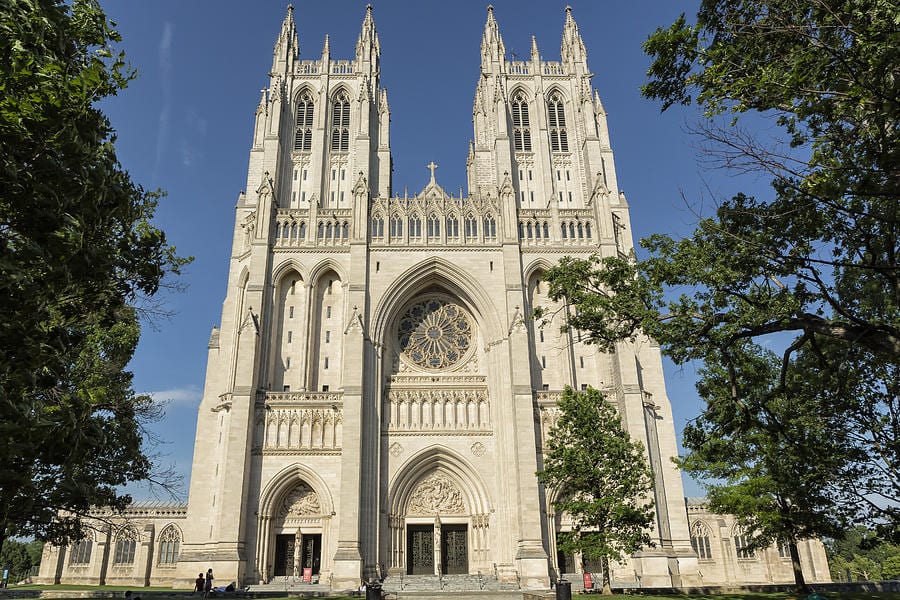
- Location: Washington, D.C.
- Year built: 1907
Construction began on September 29, 1907, when the foundation stone was laid in the presence of President Theodore Roosevelt and a crowd of more than 20,000, and ended 83 years later when the “final finial” was placed in the presence of President George H. W. Bush in 1990.
The structure is of Neo-Gothic design closely modeled on English Gothic style of the late fourteenth century. It is listed on the National Register of Historic Places. In 2007, it was ranked third on the List of America’s Favorite Architecture by the American Institute of Architects.
30.) The Siena Cathedral
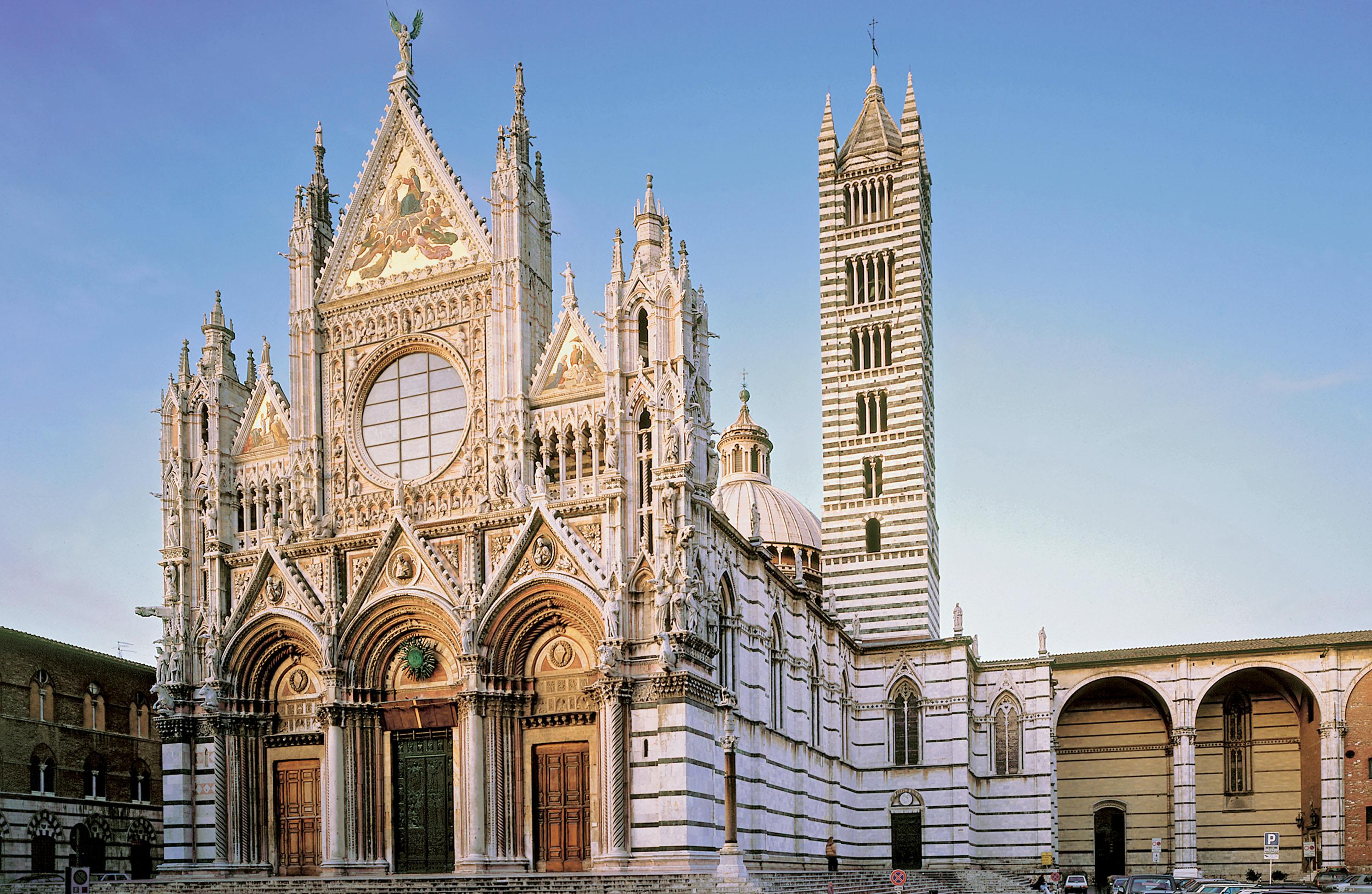
- Location: Siena, Italy
- Year built: 1263
The cathedral itself was originally designed and completed between 1215 and 1263 on the site of an earlier structure. It has the form of a Latin cross with a slightly projecting transept, a dome and a bell tower. The exterior and interior are constructed of white and greenish-black marble in alternating stripes, with addition of red marble on the façade.
Basic errors in the construction were already evident by then, however, and the work was never resumed. The outer walls, remains of this extension, can now be seen to the south of the Duomo. The floor of the uncompleted nave now serves as a parking lot and museum, and, though unfinished, the remains are testament to Sienese power, ambition, and artistic achievement.
29.) St Paul’s Cathedral
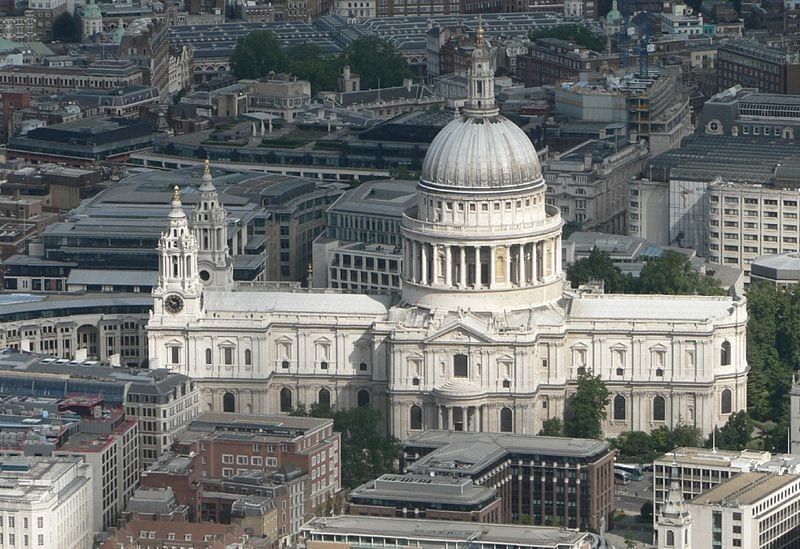
- Location: London, England
- Year built: 1697
The cathedral is one of the most famous and most recognizable sights of London. Its dome, framed by the spires of Wren’s City churches, has dominated the skyline for over 300 years. At 365 feet high, it was the tallest building in London from 1710 to 1967. The dome is among the highest in the world. The cathedral is the second-largest church building in area in the United Kingdom after Liverpool Cathedral.
St Paul’s charges for the admission of those people who are sightseers, rather than worshippers; the charge is £18 (£16 when purchased online). Outside service times, people seeking a quiet place to pray or worship are admitted to St Dunstan’s Chapel free of charge. On Sundays people are admitted only for services and concerts and there is no sightseeing.
28.) Church of the Transfiguration
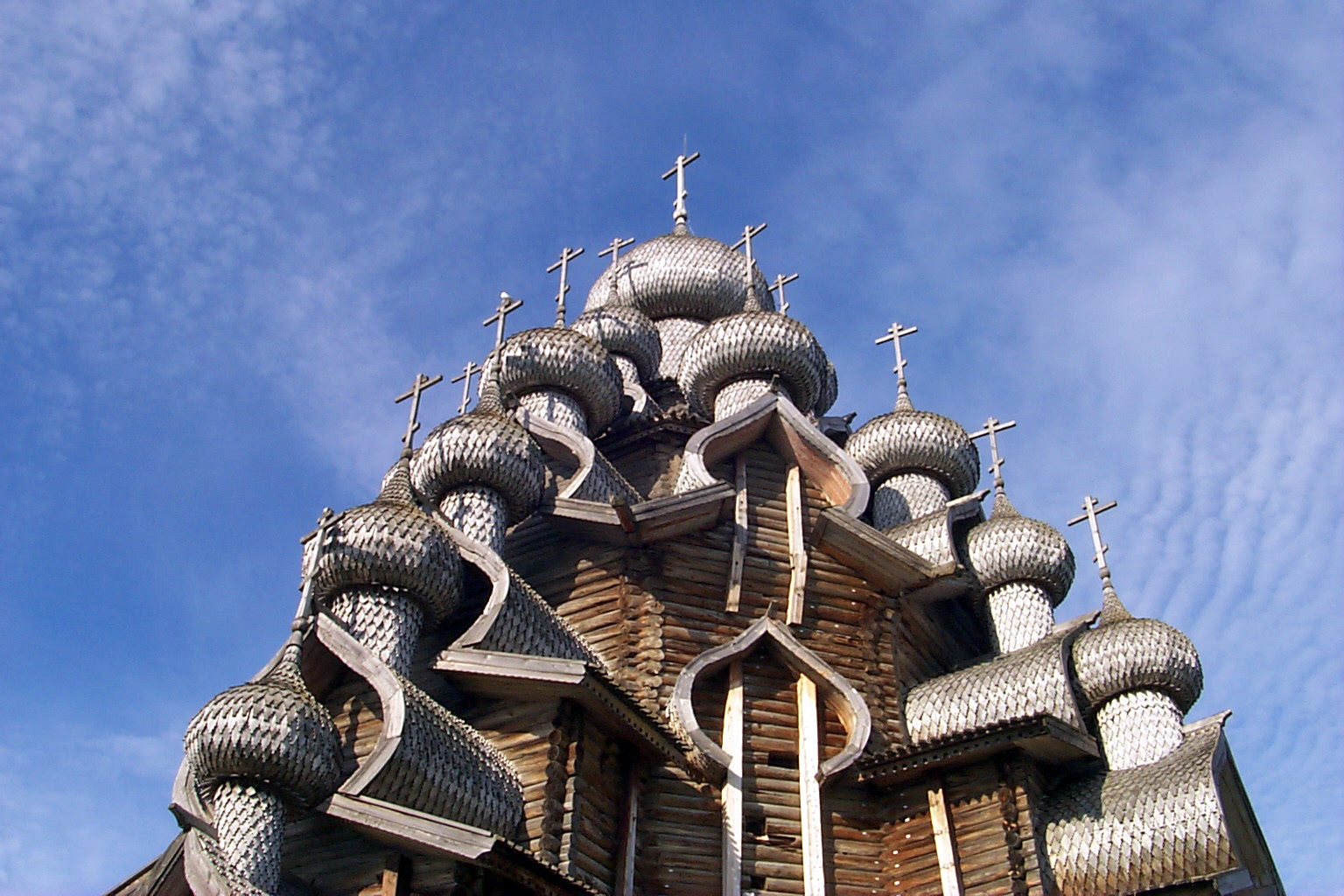
- Location: Kizhi Island, Russia
- Year built: 1714
The Church of the Transfiguration is the most remarkable cathedral. It is not heated and is, therefore, called a summer church and does not hold winter services. Its altar was laid June 6, 1714, as inscribed on the cross located inside the church. This church was built on the site of the old one which was burnt by lightning. The builders’ names are unknown. A legend tells that the main builder used one axe for the whole construction, which he threw into the lake upon completion with the words “there was not and will be not another one to match it.”
According to the Russian carpentry traditions of that time, the Transfiguration Church was built of wood only with no nails apart from the domes and roof shingles. There are approximately 180,000 nails securing the 60,000 roof shingles. The fence serves no defensive purpose at all. It is a symbolic division between the holy ground and the outside world.
27.) Gergeti Trinity Church
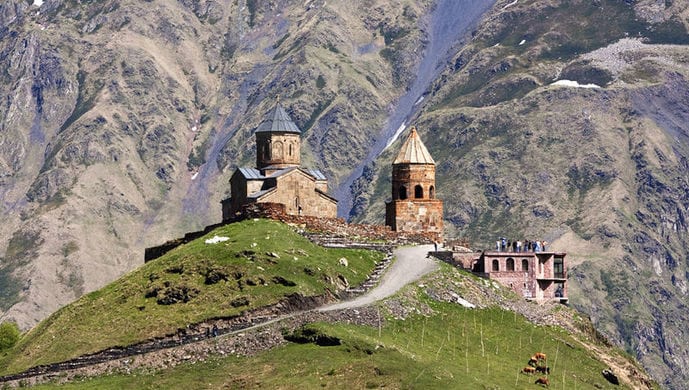
- Location: Georgia
- Year built: 1500’s
The Gergeti Trinity Church was built in the 14th century, and is the only cross-cupola church in Khevi province. Its isolated location on top of a steep mountain surrounded by the vastness of nature has made it a symbol for Georgia. The church is a popular waypoint for trekkers in the area, and can be reached by a steep 3 hour climb up the mountain, or around 30 minutes by jeep up a rough mountain trail.
During the Soviet era, all religious services were prohibited, but the church remained a popular tourist destination. The church is now an active establishment of the Georgian Orthodox and Apostolic Church.
26.) Cathedral of Brasília
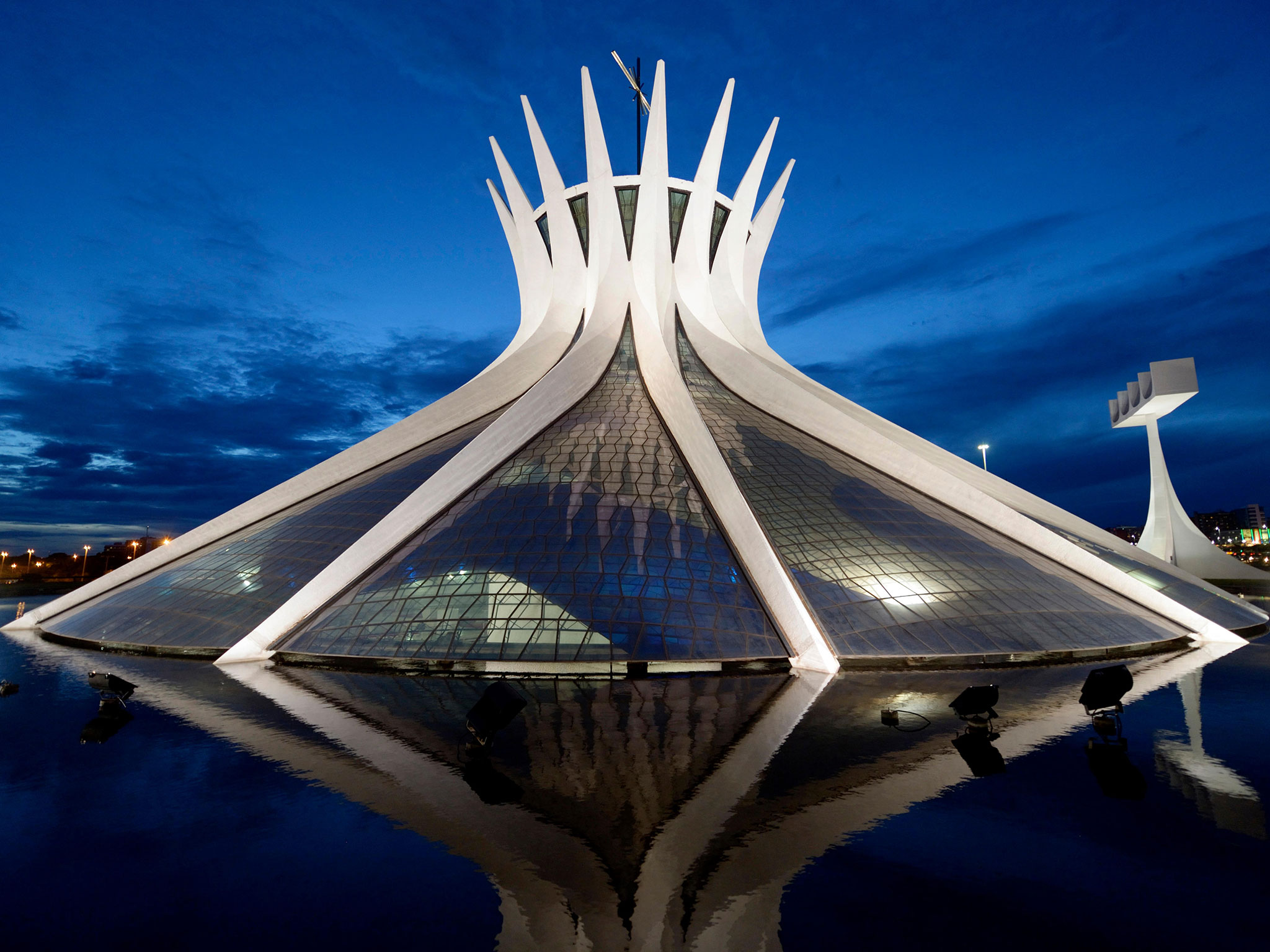
- Location: Brazil
- Year built: 1960
The cornerstone was laid on September 15, 1958, and the structure was finished on April 21, 1960, with only the roof structure visible above ground. It was officially opened by Cardinal D. Eugenio Salles on May 31, 1970. The structure consists of 16 identical concrete columns assembled on site. These columns weight up to 99 tons. The cathedral sees some 1,000,000 visitors each year.
Coinciding with the 50th anniversary of Brasilia, major renovations were begun on April 21, 2012 to update and repair the building and infrastructure, and address issues with the roof. The exterior glazing is being replaced, and the original stained glass designed by Marianne Peretti (which used hand made glass and thus varied widely in thickness) is being replaced by uniform glass cut and assembled in Brazil from plates manufactured in Germany. In addition to the roof repairs, all marble surfaces will be polished, concrete repaired and painted, the angels in the nave will be cleaned and re-mounted, and the bell mechanisms will be replaced. The eye-catching structure consists of 16 stark white concrete columns, which are curved inward resembling outstretched hands reaching up toward heaven.The cathedral will be open to the public during a renovation.
25.) Chapel of the Holy Cross
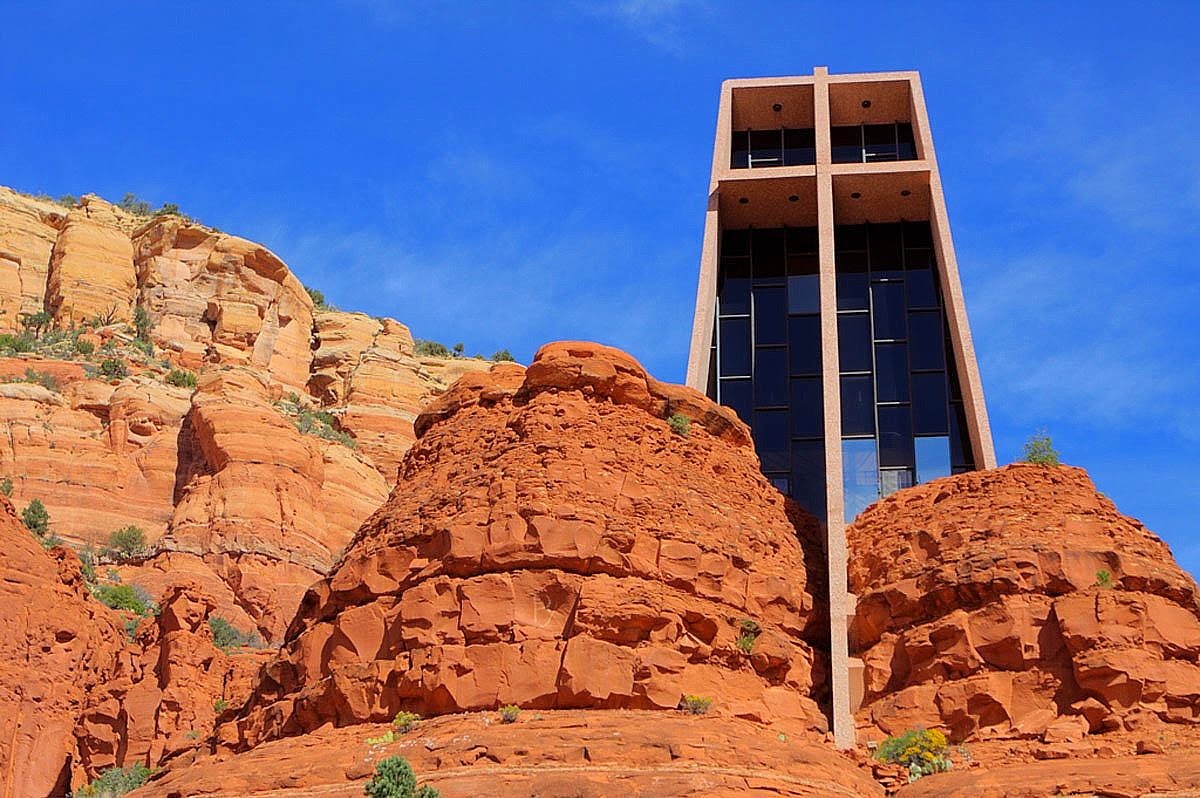
- Location: Sedona, Arizona
- Year built: 1956
The chapel was inspired and commissioned by local rancher and sculptor Marguerite Brunswig Staude, who had been inspired in 1932 by the newly constructed Empire State Building to build such a church. After an attempt to do so in Budapest, Hungary (with the help of Lloyd Wright, son of architect Frank Lloyd Wright) was aborted due to the outbreak of World War II, she decided to build the church in her native region. Richard Hein was chosen as project architect, and the design was executed by architect August K. Strotz. The chapel is built on Coconino National Forest land; the late Senator Barry Goldwater assisted Staude in obtaining a special-use permit.
The construction supervisor was Fred Courkos, who built the chapel in 18 months at a cost of US $300,000. The chapel was completed in 1956. In 2007, Arizonans voted the Chapel to be one of the Seven Man-Made Wonders of Arizona.
24.) León Cathedral
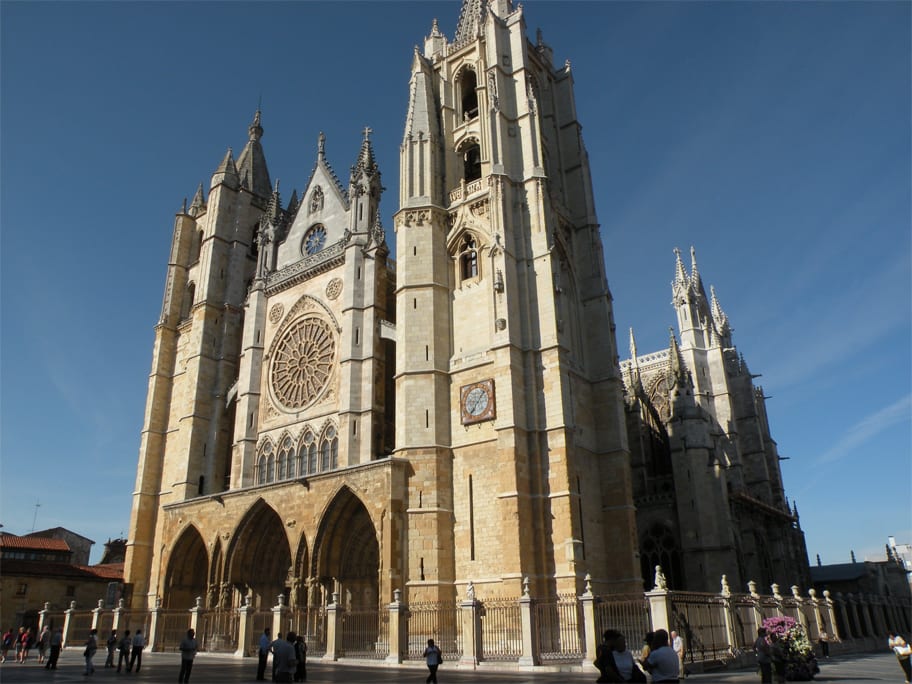
- Location: León, Spain
- Year built: 1700’s
The León Cathedral, dedicated to Santa María de la Regla, was declared of Cultural Interest in 1844. It is known as the Pulchra Leonina and is a masterpiece of the Gothic style of the mid-13th century. By the late 16th century it was virtually completed. The design is attributed to the architect Enrique. The Cathedral Museum houses a large collection of sacred art. There are almost 1,500 pieces, including 50 Romanesque sculptures of the Virgin, dating from pre-historic times to the 18th century.
In the Main Chapel, there is an altarpiece by Nicolás Francés (15th century) and a silver urn containing the relics of San Froilán, the town’s patron saint, made by Enrique de Arfe. The 13th- to 15th-century cloister contains sculpted details in the capitals, friezes and ledges.
23.) St. Basil’s Cathedral
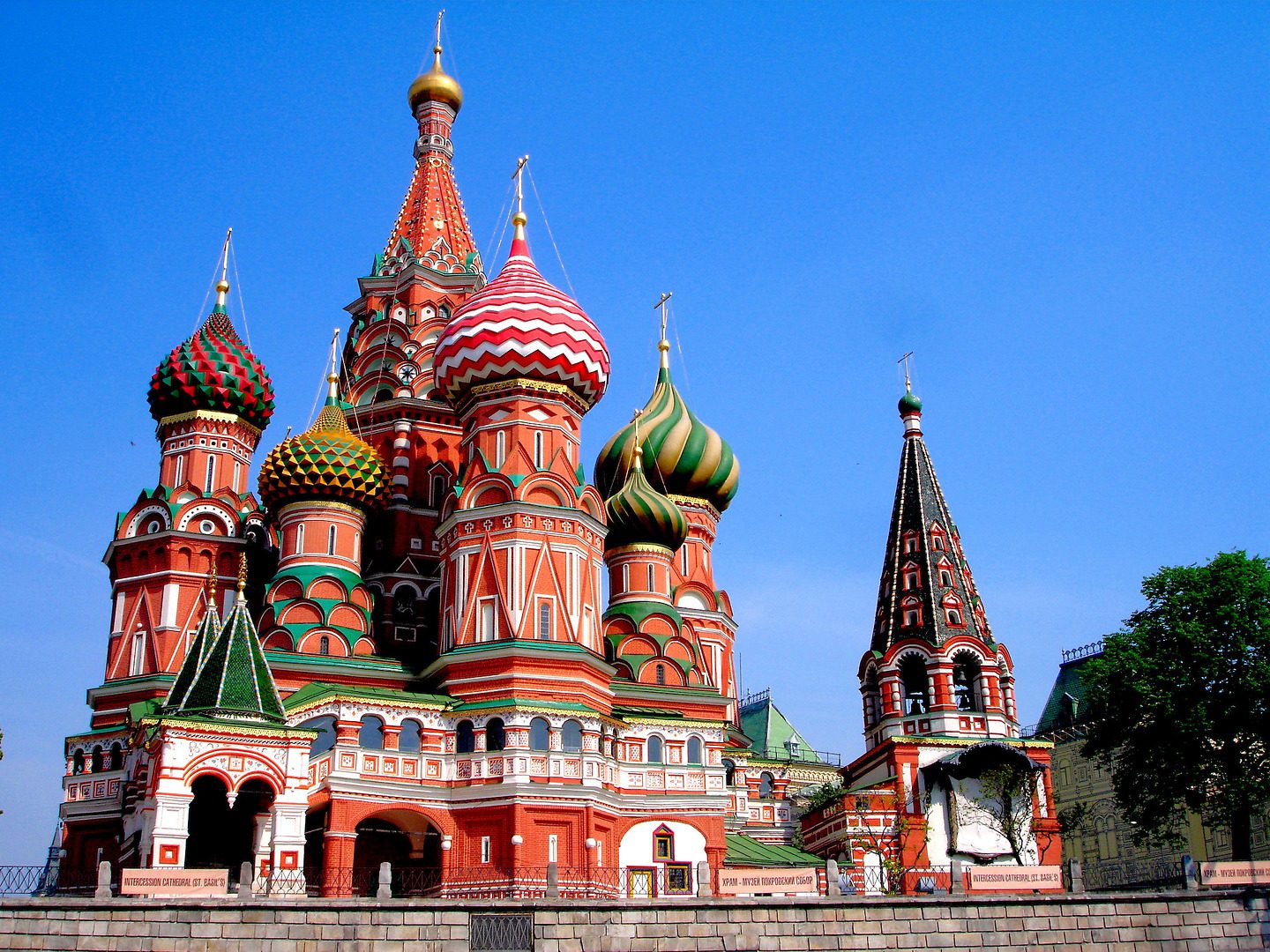
- Location: Moscow, Russia
- Year built: 1555
It was built from 1555–61 on orders from Ivan the Terrible and commemorates the capture of Kazan and Astrakhan. It is not actually within the Kremlin, but often served as a visual metonym for Russia in western media throughout the Cold War. The church has been part of the Moscow Kremlin and Red Square UNESCO World Heritage Site since 1990.
The church acquired its present-day vivid colors in several stages from the 1680s to 1848. Russian attitude towards color in the 17th century changed in favor of bright colors; icon and mural art experienced an explosive growth in the number of available paints, dyes and their combinations.
22.) Basilica of Notre-Dame de Fourvière
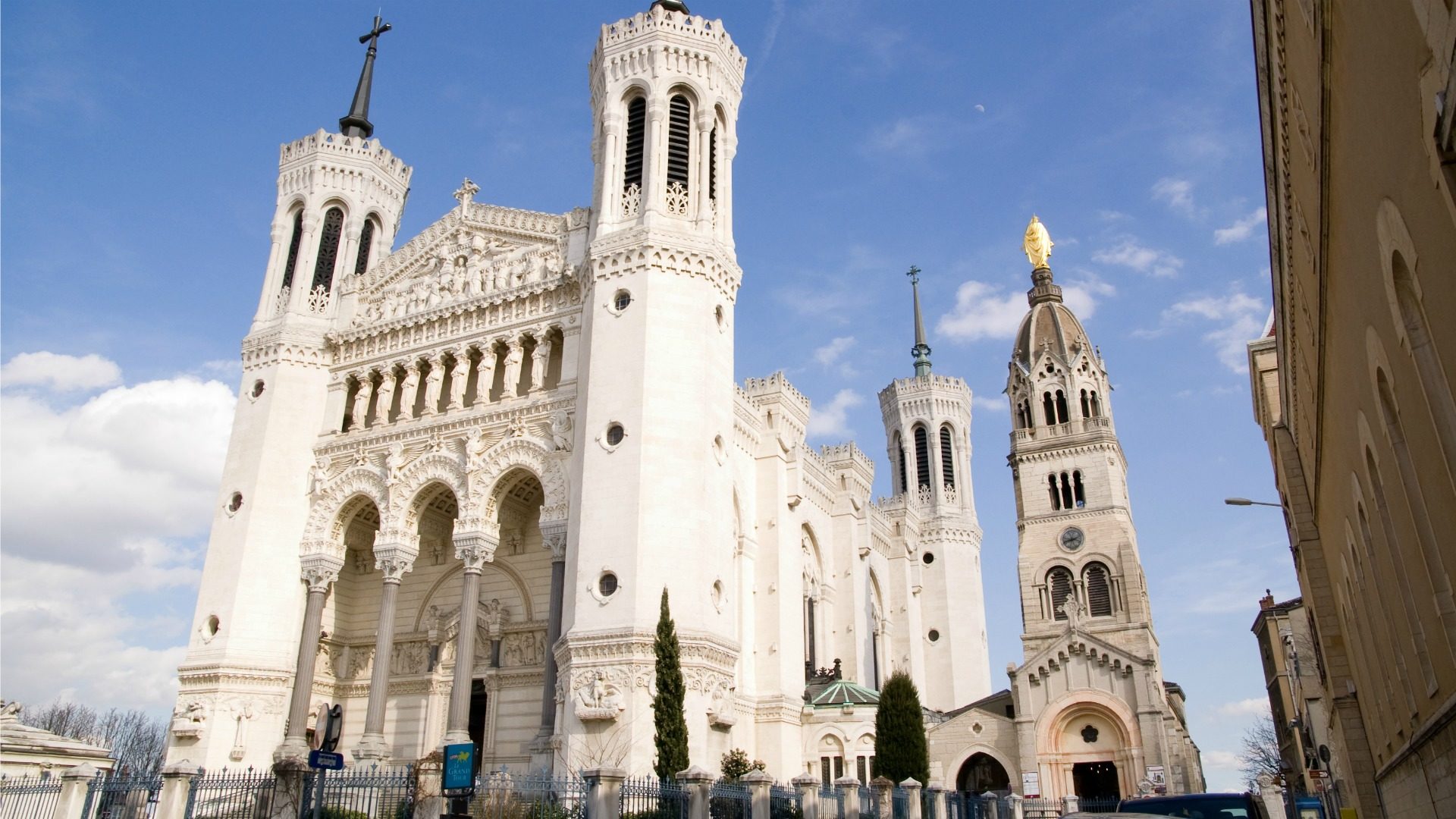
- Location: Lyon, France
- Year built: 1884
It was built with private funds between 1872 and 1884 in a dominant position overlooking the city. It has four main towers, and a bell tower topped with a gilded statue of the Virgin Mary. It features fine mosaics, superb stained glass, and a crypt of Saint Joseph. The basilica has acquired the local nickname of “the upside-down elephant”, because the building looks like the body of an elephant and the four towers look like its legs.
Perched on top of the Fourvière hill, the basilica looms impressively over the city of Lyon, from where it can be seen from many vantage points; not unintentionally, the Basilica of Fourvière has become a symbol of the city. The Basilica, which offers guided tours and contains a Museum of Sacred Art, receives 2 million visitors annually. At certain times, members of the public may access the basilica’s north tower for a spectacular 180-degree view of Lyon and its suburbs. On a clear day, Mont Blanc, the highest point in Europe, can be seen in the distance.
21.) Winchester Cathedral
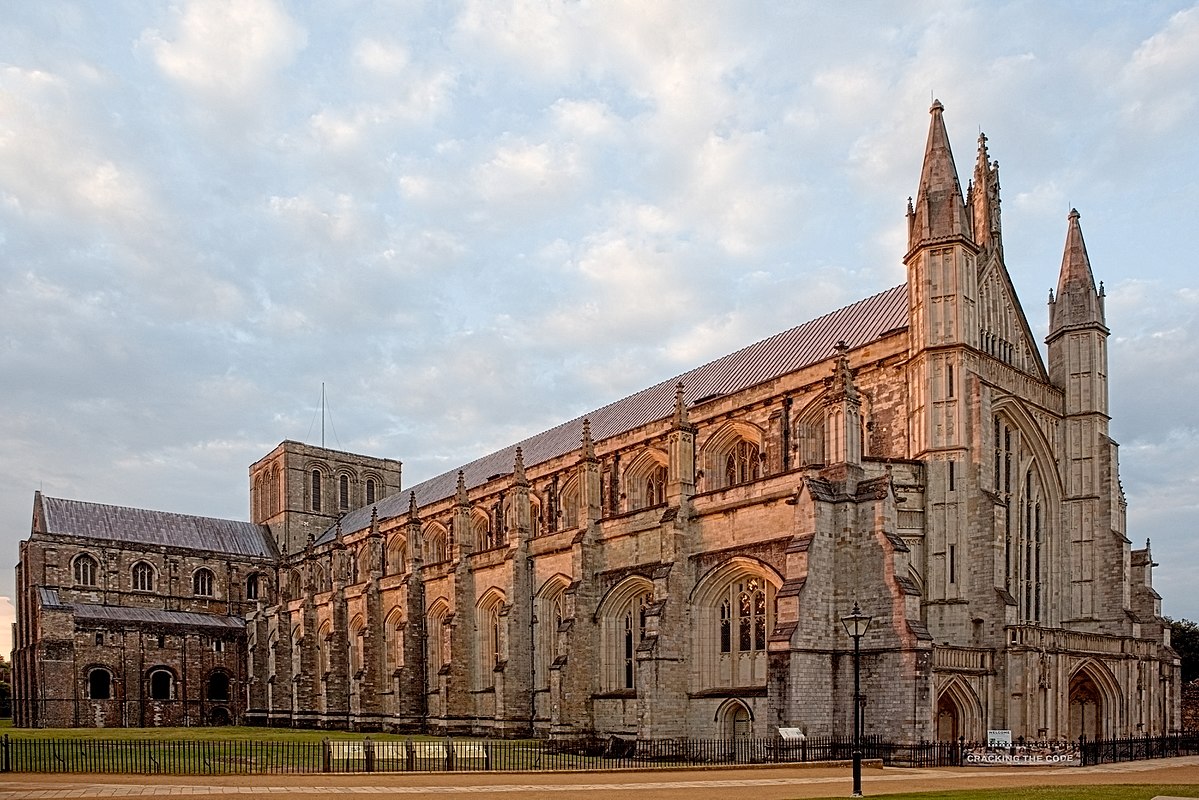
- Location: Winchester, England
- Year built: 1500’s
By the early 16th century, much of the Cathedral you see today was complete. It is one of the largest cathedrals in Europe, with the longest nave and greatest overall length of any Gothic cathedral in Europe. In 2005, the building was used as a film set for The Da Vinci Code, with the north transept used as the Vatican. Following this, the cathedral hosted discussions and displays to debunk the book.
The earliest recorded organ at Winchester Cathedral was in the 10th century; it had 400 pipes and could be heard throughout the city. The earliest known organist of Winchester Cathedral is John Dyer in 1402. The current organ, the work of master organ builder Henry Willis, was first displayed in the Great Exhibition of 1851, where it was the largest pipe organ. Winchester Cathedral organist Samuel Sebastian Wesley recommended its purchase to the dean and chapter; it was reduced in size and installed in 1854. It was modified in 1897 and 1905, and completely rebuilt by Harrison & Harrison in 1937 and again in 1986–88.
20.) Nidaros Cathedral
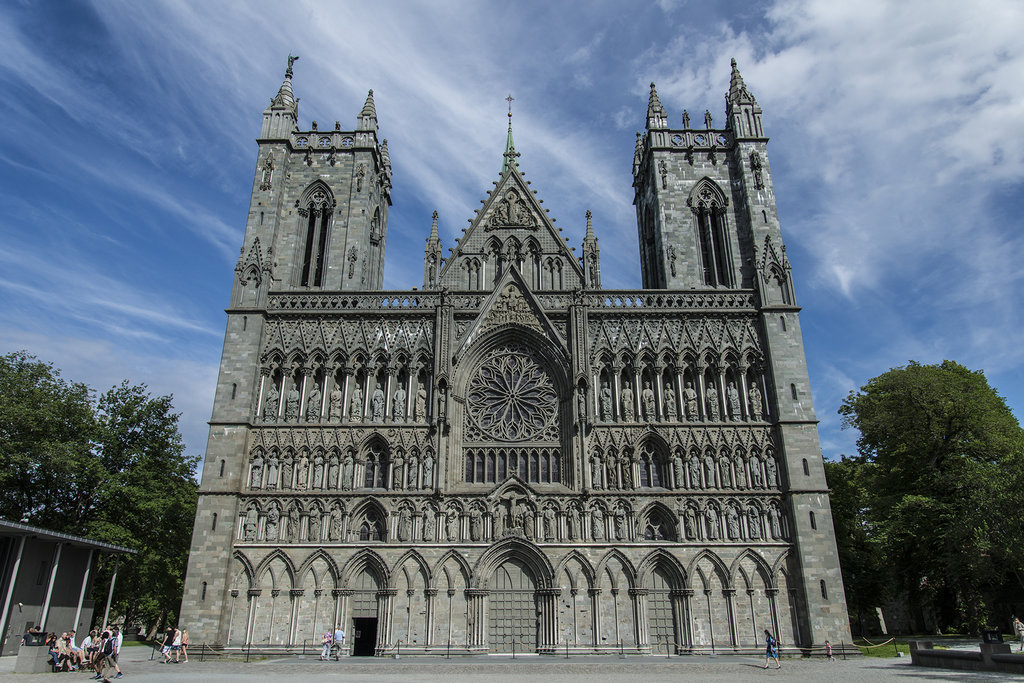
- Location: Trondheim, Norway
- Year built: 1070-1300
It is built over the burial site of Saint Olav, the King of Norway in the 11th century, who became the patron saint of the nation, and is the traditional location for the consecration of the King of Norway. It was built from 1070 to 1300, and designated as the cathedral for the Diocese of Nidaros in 1152. After the Protestant Reformation, it was taken from the Roman Catholics by the new Church of Norway in 1537. It is the northernmost medieval cathedral in the world.
Two organs are installed in the Cathedral. The main organ was built by the Steinmeyer firm in 1930, and was erected in the north transept. It then had 125 stops. Installation of the Steinmeyer organ was commissioned in 1930 for the 900th anniversary of the Battle of Stiklestad. The organ was funded mostly by donations, particularly by Elias Anton Cappelen Smith. In 1962, the organ was heavily rebuilt and moved to the west nave. Many stops were removed; some of them were used to build a new choir organ. This organ was fully restored in 2014.
19.) The Church of Mary the Queen or Our Lady of the Lake
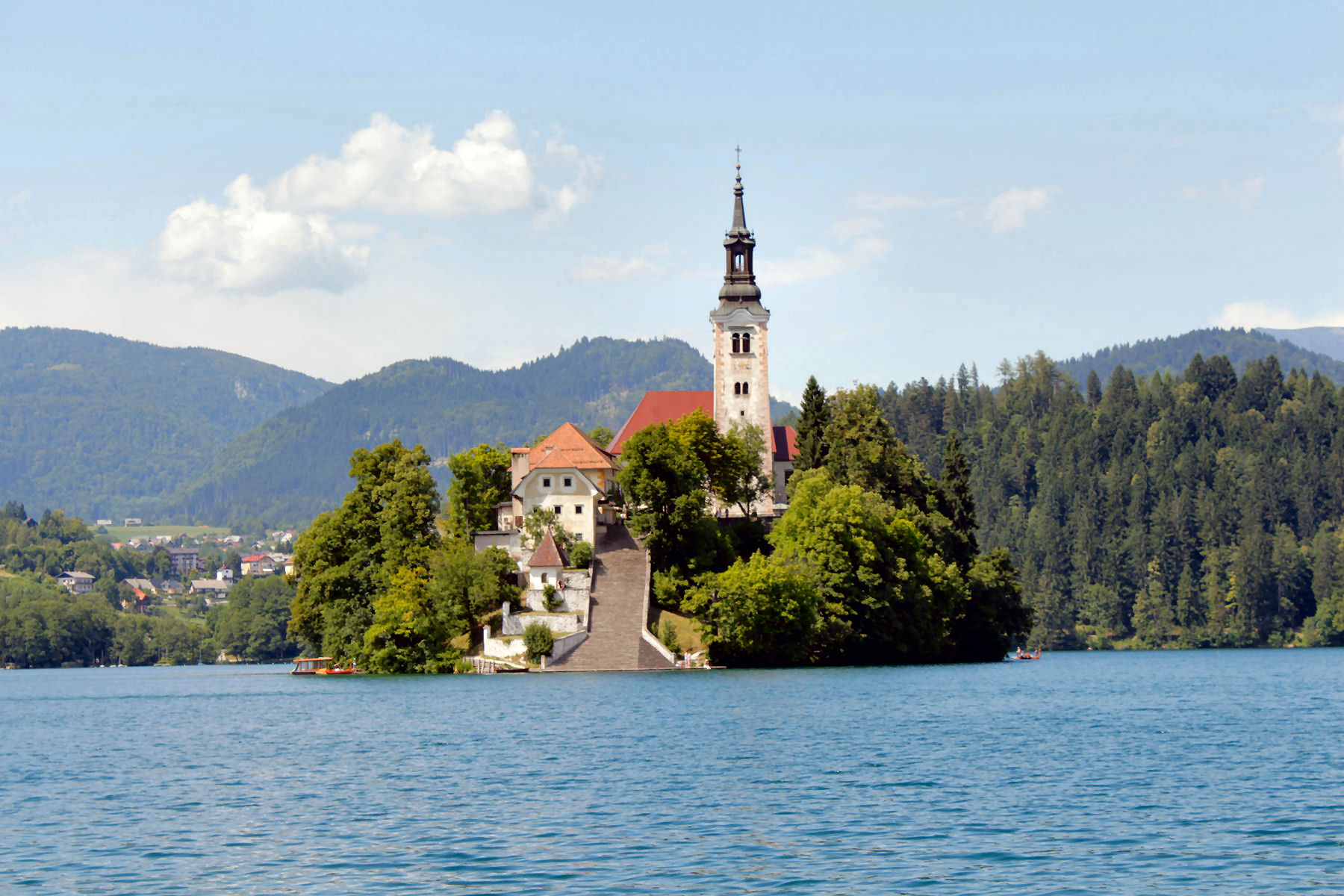
- Location: Lake Bled, Slovenia
- Year built: 1534
This beauty is located on a small island in the middle of Lake Bled. It has such a beautiful setting that photographs of it are regularly found in travel magazines. Of special interest in the church is a bell of wishes, made by Francesco Patavino from Padova way back in 1534. The legend says that those who ring the bell and make a wish, will see their wish come true. But there’s one rule: you can make only one wish.
There are three ways to get to the Island. The usual way to reach the island is by taking a trip on the traditional Pletna boat. The Pletna is a large gondola-like row boat with a canopy that takes visitors from the shores of Lake Bled to Bled Island. There are regular departures throughout the day and it takes about 20 minutes each way. It costs €12 for a roundtrip to Bled Island and this includes waiting time of 30 minutes so you can explore the island and the church. Another option is to rent a rowboat. It is cheaper and you get the pleasure of meandering back and forth through the lake. You can rent a boat at the Castle boathouse at Grand hotel Toplice or at the Pension Pletna. A boat for 3 persons costs around €15 per hour, a boat for 5 persons costs around €20 per hour. If you are a good swimmer, you can also swim to the island. But be aware – if you swim to the island, you won’t be able to explore the church unless you ask someone to bring you clothes by boat.
18.) St. Peter’s Church
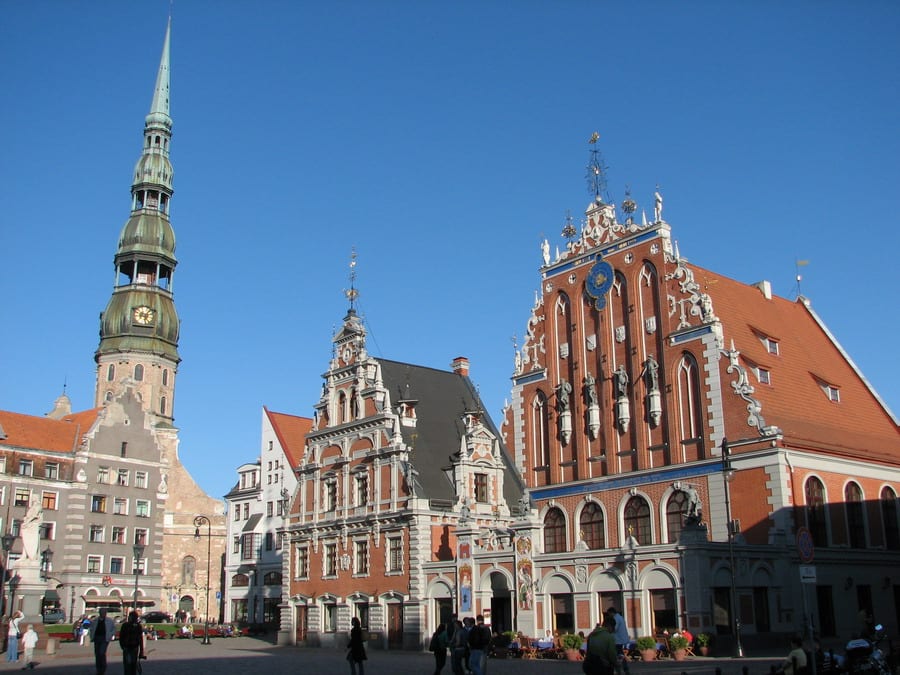
- Location: Riga, Latvia
- Year built: Unknown
It is a parish church of the Evangelical Lutheran Church of Latvia.First mention of the St. Peter’s Church is in records dating to 1209. The church was a masonry construction and therefore undamaged by a city fire in Riga that year.
The history of the church can be divided into three distinct periods: two associated with Gothic and Romanesque building styles, the third with the early Baroque period. The middle section of the church was built during the 13th century, which encompasses the first period. The only remnants of this period are located in the outer nave walls and on the inside of a few pillars in the nave, around which larger pillars were later built.
17.) Hagia Sophia
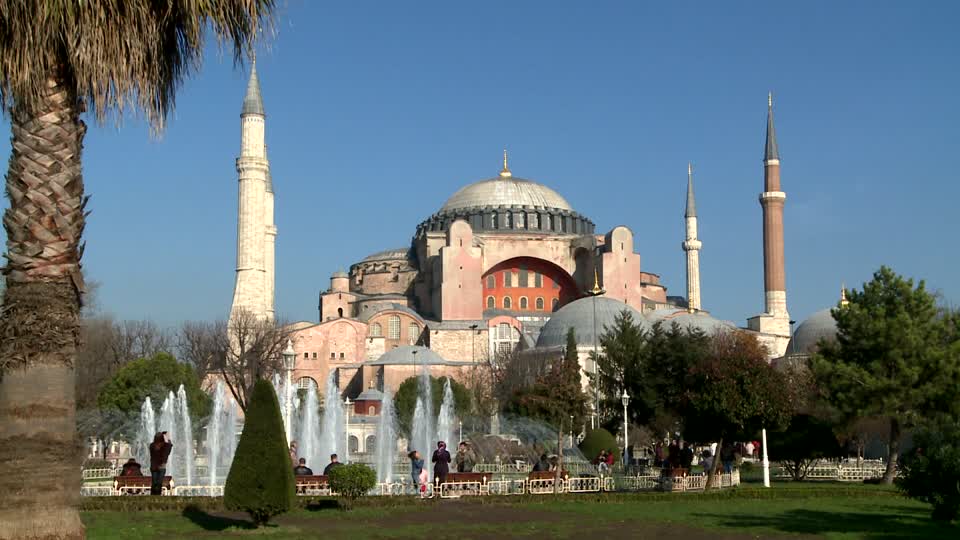
- Location: Istanbul, Turkey
- Year built: 1453
From the date of its construction in 537 AD, and until 1453, it served as an Eastern Orthodox cathedral and seat of the Patriarch of Constantinople, except between 1204 and 1261, when it was converted by the Fourth Crusaders to a Roman Catholic cathedral under the Latin Empire. The building was later converted into an Ottoman mosque from May 1453 until 1931. It was then secularized and opened as a museum in February 1935.
Famous in particular for its massive dome, it is considered the epitome of Byzantine architecture and is said to have “changed the history of architecture.” It remained the world’s largest cathedral for nearly a thousand years, until Seville Cathedral was completed in 1520.
16.) St. Stephen’s Cathedral
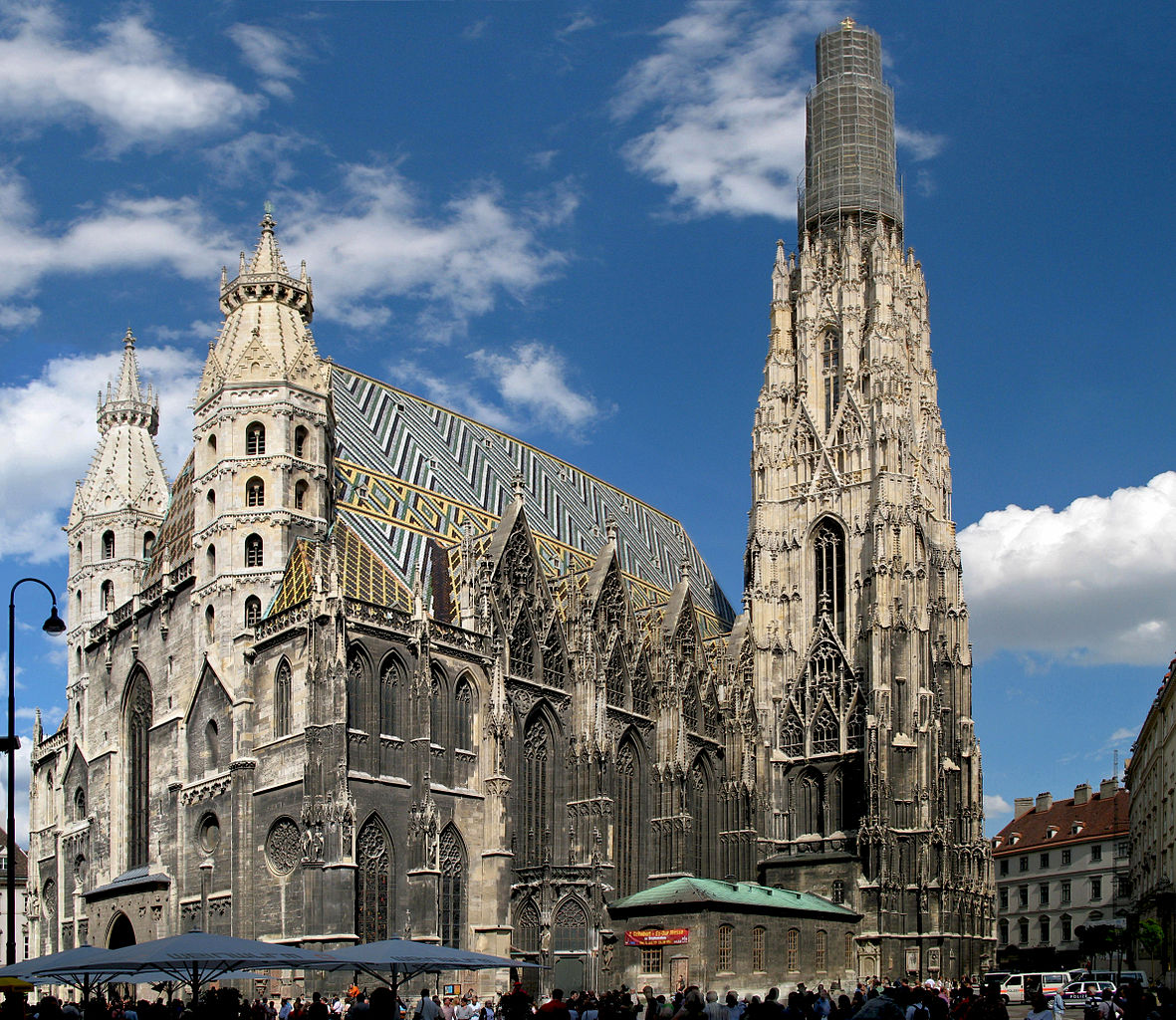
- Location: Vienna, Austria
- Year built: 1147
The current Romanesque and Gothic form of the cathedral, seen today in the Stephansplatz, was largely initiated by Duke Rudolf IV (1339–1365) and stands on the ruins of two earlier churches, the first a parish church consecrated in 1147.
The most important religious building in Vienna, St. Stephen’s Cathedral has borne witness to many important events in Habsburg and Austrian history and has, with its multi-coloured tile roof, become one of the city’s most recognizable symbols.
15.) Hallgrímskirkja
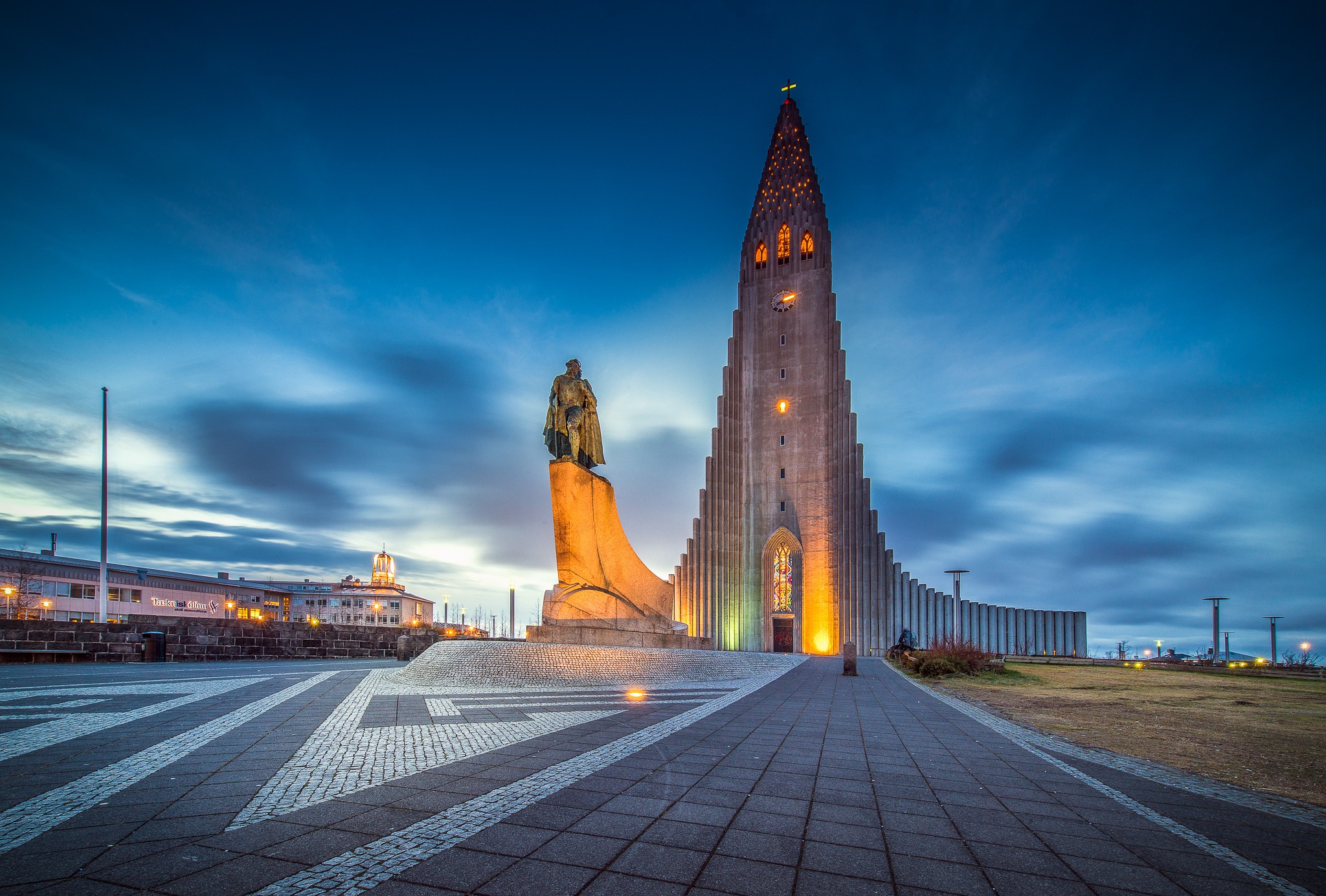
- Location: Reykjavík, Iceland
- Year built: 1945
At 244 feet high, it is the largest church in Iceland and among the tallest structures in Iceland. The church is named after the Icelandic poet and clergyman Hallgrímur Pétursson (1614–1674), author of the Passion Hymns.
It took 41 years to build the church: construction started in 1945 and ended in 1986, but the landmark tower being completed long before the whole church was completed. The crypt beneath the choir was consecrated in 1948, the steeple and wings were completed in 1974, and the nave was consecrated in 1986. At the time of construction, the building was criticized as too old-fashioned and as a blend of different architectural styles.
14.) The Metropolitan Cathedral of Saints Vitus
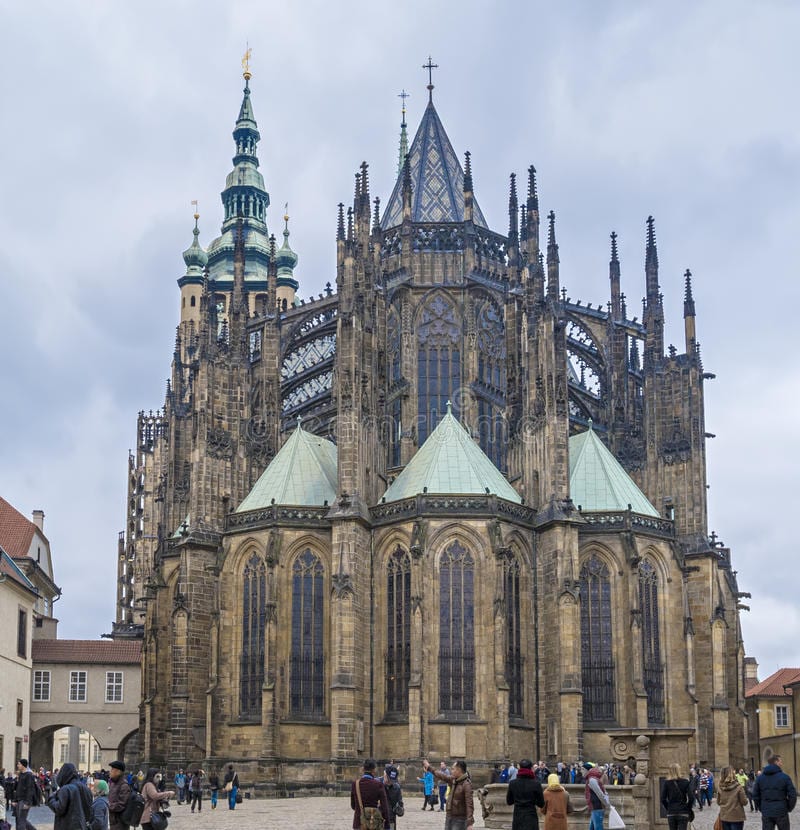
- Location: Prague, Czech Republic
- Year built: 930
It is a Roman Catholic metropolitan cathedral in Prague, the seat of the Archbishop of Prague. Until 1997, the cathedral was dedicated only to Saint Vitus, and is still commonly named only as St. Vitus Cathedral. This cathedral is a prominent example of Gothic architecture and is the largest and most important church in the country. Located within Prague Castle and containing the tombs of many Bohemian kings and Holy Roman Emperors, the cathedral is under the ownership of the Czech government as part of the Prague Castle complex.
13.) Westminster Abbey
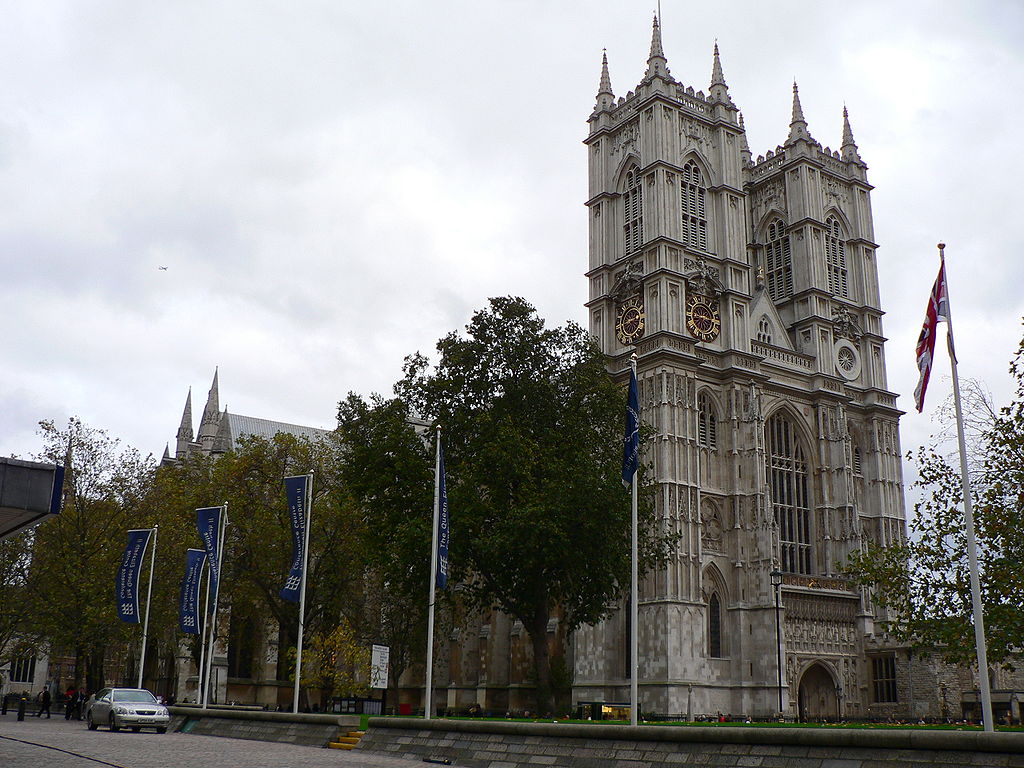
- Location: London, England
- Year built: 1540
The building itself was a Benedictine monastic church until the monastery was dissolved in 1539. Between 1540 and 1556, the abbey had the status of a cathedral. Since 1560, the building is no longer an abbey or a cathedral, having instead the status of a Church of England “Royal Peculiar”—a church responsible directly to the sovereign.
There have been at least 16 royal weddings at the abbey since 1100. Two were of reigning monarchs (Henry I and Richard II), although, before 1919, there had been none for some 500 years.
12.) Le Mont Saint-Michel
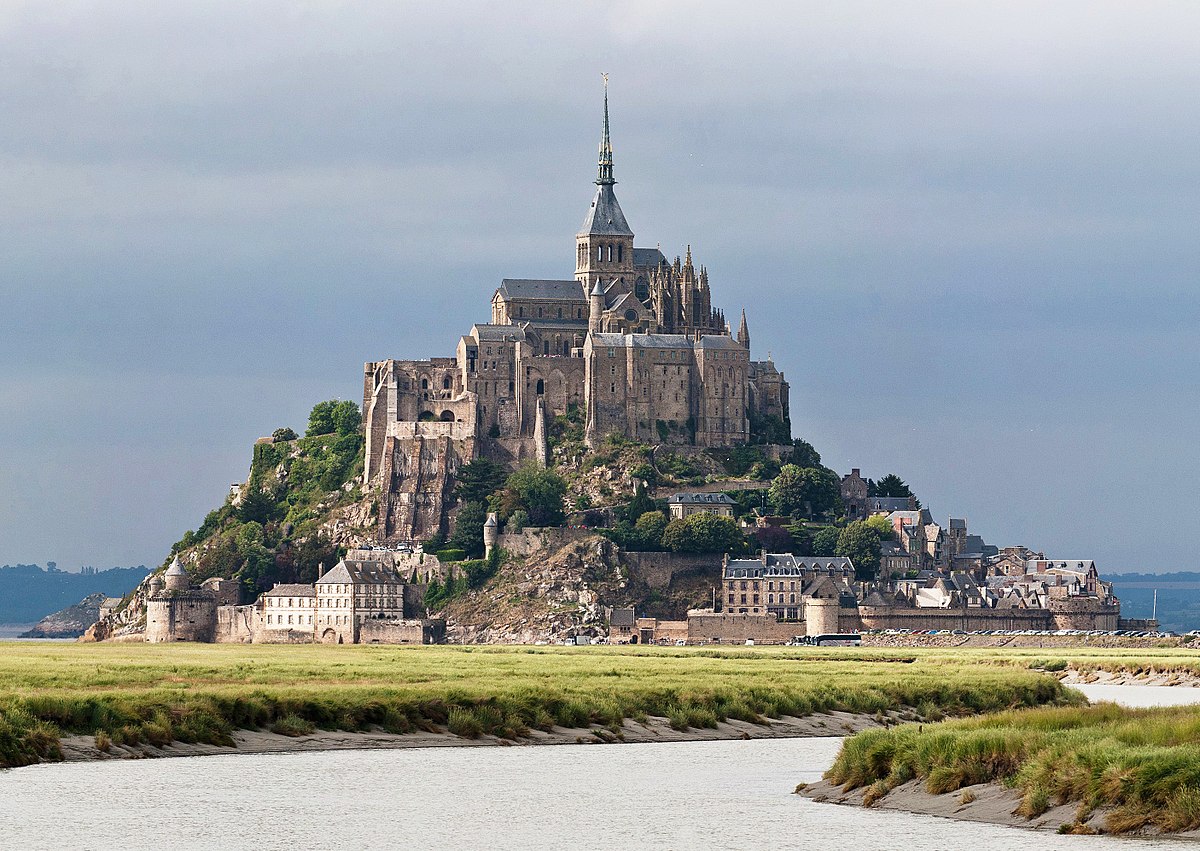
- Location: Normandy, France
- Year built: 460
It is located about a half mile off the country’s northwestern coast, at the mouth of the Couesnon River near Avranches and is 247 acres in size. As of 2009, the island has a population of 44. The island has held strategic fortifications since ancient times and since the 8th century AD has been the seat of the monastery from which it draws its name.
The structural composition of the town exemplifies the feudal society that constructed it: on top, God, the abbey and monastery; below, the great halls; then stores and housing; and at the bottom, outside the walls, houses for fishermen and farmers. One of France’s most recognizable landmarks, visited by more than 3 million people each year, Mont-Saint-Michel and its bay are on the UNESCO list of World Heritage Sites. Over 60 buildings within the commune are protected in France as monuments historiques.
11.) The St. Alexander Nevsky Cathedral
- Location: Sofia, Bulgaria
- Year built: 1882
Built in Neo-Byzantine style, it serves as the cathedral church of the Patriarch of Bulgaria and it is one of the largest Eastern Orthodox cathedrals in the world, as well as one of Sofia’s symbols and primary tourist attractions. The St. Alexander Nevsky Cathedral in Sofia occupies an area of 34,100 square feet and can hold 10,000 people inside. It is the second-largest cathedral located on the Balkan Peninsula, after the Cathedral of Saint Sava in Belgrade.
10.) Cologne Cathedral (Kölner Dom)
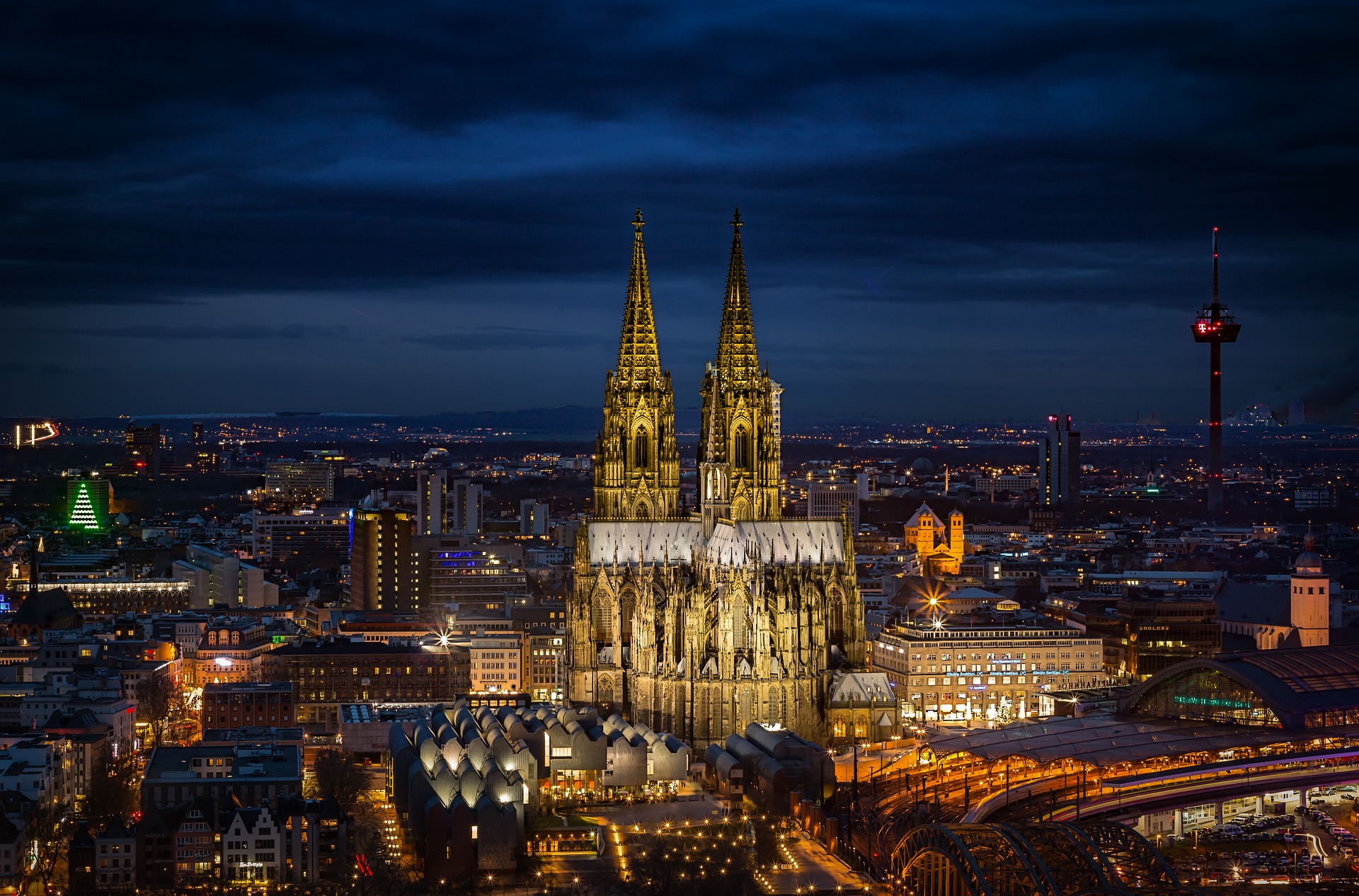
- Location: Köln, Germany
- Year built: 1880
Just an hour outside of outside of Dusseldorf, Cologne is home to the fourth-largest cathedral in Germany. Considered by many to be the most beautiful Gothic cathedral in Germany, the CologneCathedral (Kölner Dom) is Cologne’s most famous landmark. Between 1880-1884 it was the tallest building in the world, until it was beaten by the Washington Monument and the Eiffel Tower.
While no longer the tallest building in the world, it still claims the largest facade in the world, and is the second-tallest Gothic cathedral in the world (its towers measure 515 feet), surpassed only by The Cathedral of Ulm. The cathedral sits on holy ground, on the site of a 4th century Roman temple. Construction on the cathedral began in 1248 and took 600 years before its completion in 1880. In 1996, Cologne Cathedral was added to the UNESCO list of monuments as a world cultural monument. The town of Cologne is also home to one of the best European Christmas markets.
9.) Notre-Dame de Chartres
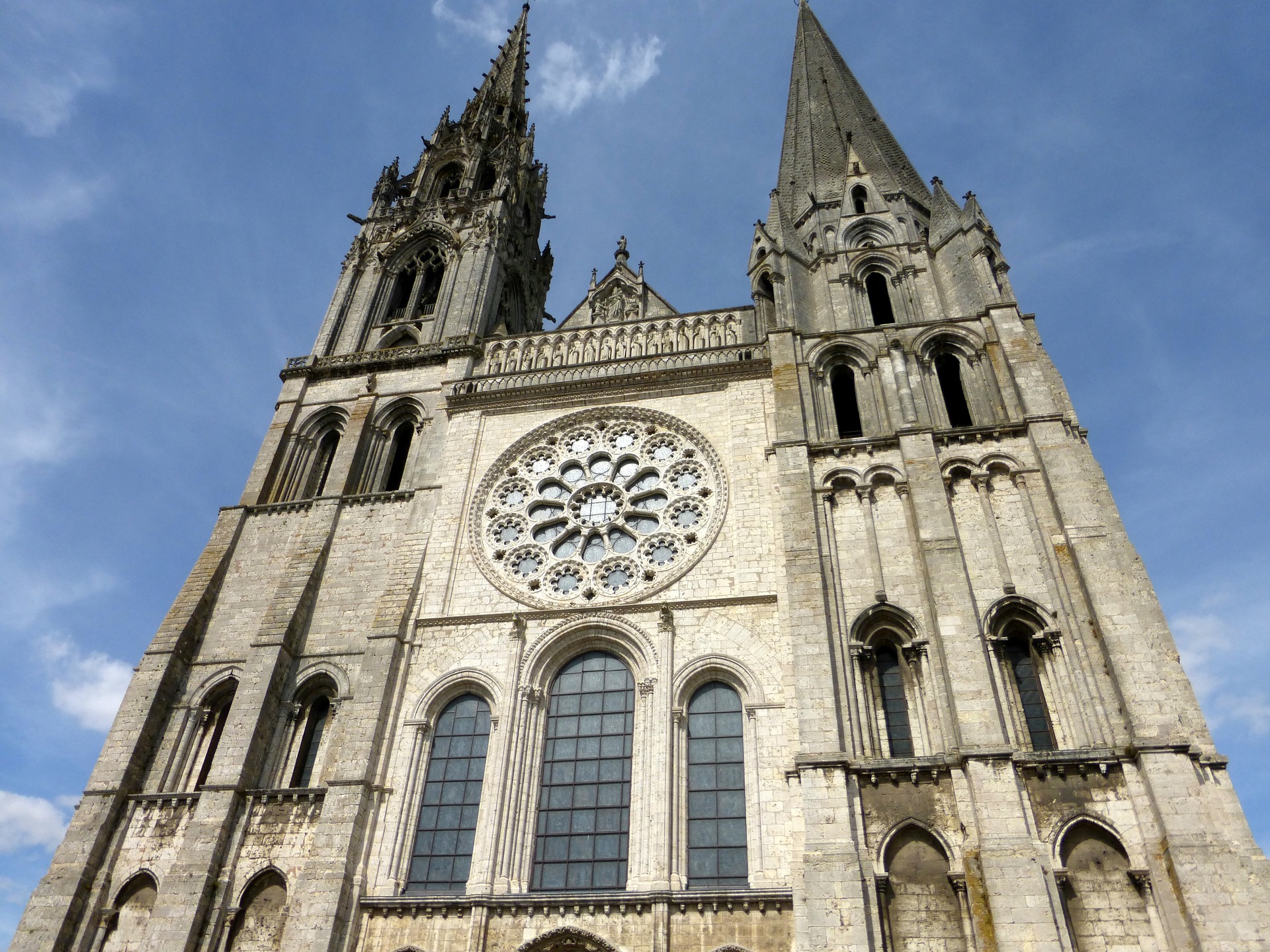
- Location: Chartres, France
- Year built: 1192
Located just a little over an hour’s drive southwest of Paris, the small town of Chartres is home to Notre-Dame de Chartres, one of the best examples of French High Gothic architecture. Built between 1194 and 1220 it was deemed a World Heritage Site by UNESCO, who refers to it as “the high point of French Gothic art” and a “masterpiece.” Famous for its stained glass windows, this medieval church can be seen from miles away and “is a milestone in the development of Western architecture because it employs all the structural elements of the new Gothic architecture: the pointed arch; the rib-and-panel vault; and, most significantly, the flying buttress.”
8.) La Catedral de Sevilla
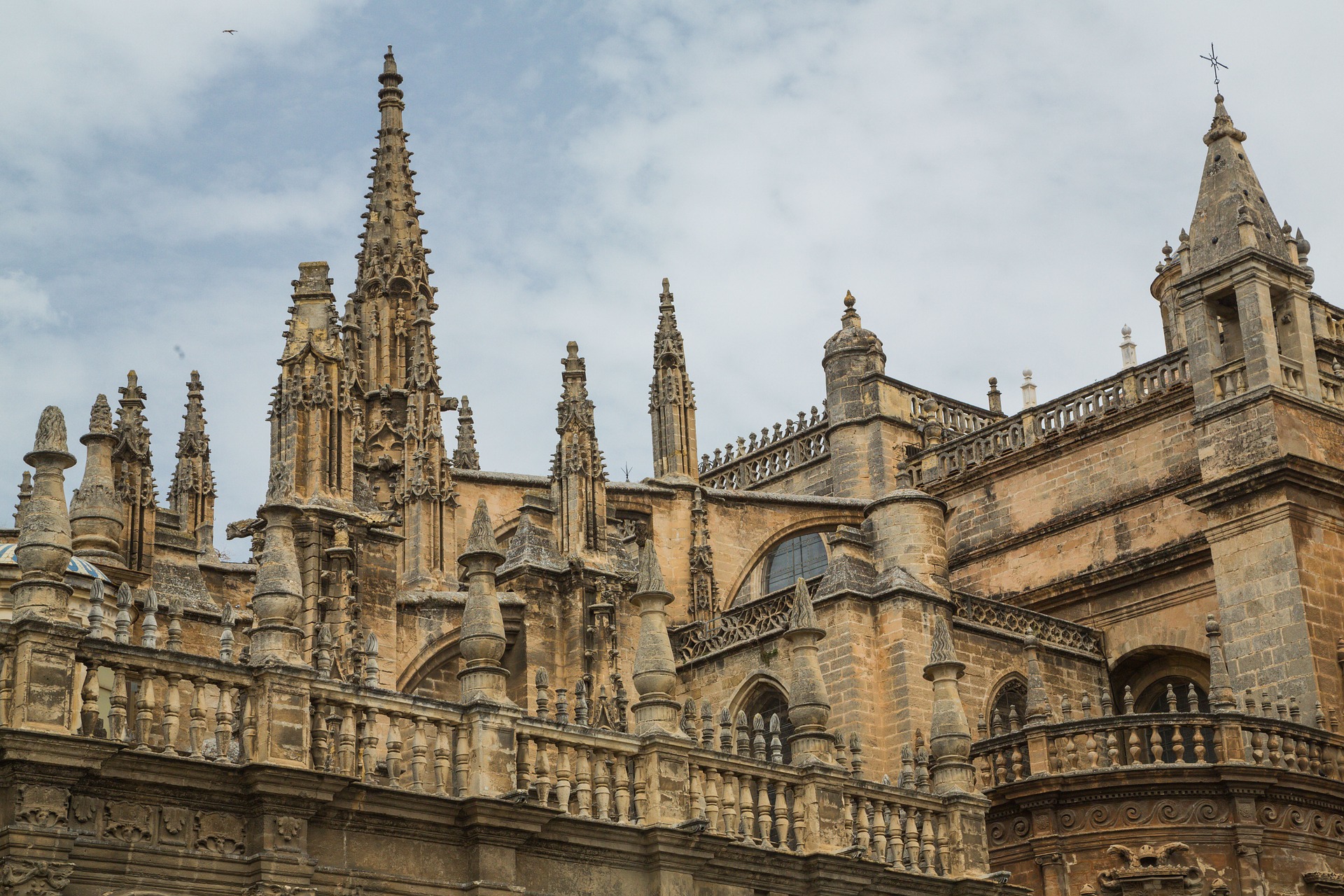
- Location: Seville, Spain
- Year built: 1401
The capital of Spain’s Andalusia region, Seville (or, Sevilla) is just a few hours south of Madrid by train. While Game of Throne fans may know Seville’s Alcazar de Sevilla as the home of Dorne, it is most famous for its cathedral, La Catedral de Sevilla. Built in the 15th and 16th centuries, this Gothic cathedral is home to the largest altar in the world as well as the tomb of Christopher Columbus. Incidentally, the cathedral sits in the heart of the city’s old Jewish quarter, Barrio Santa Cruz. An Arab mosque sat on the cathedral site prior to the cathedral’s construction, and the cathedral still houses an old minaret from the mosque.
7.) Sainte-Chapelle
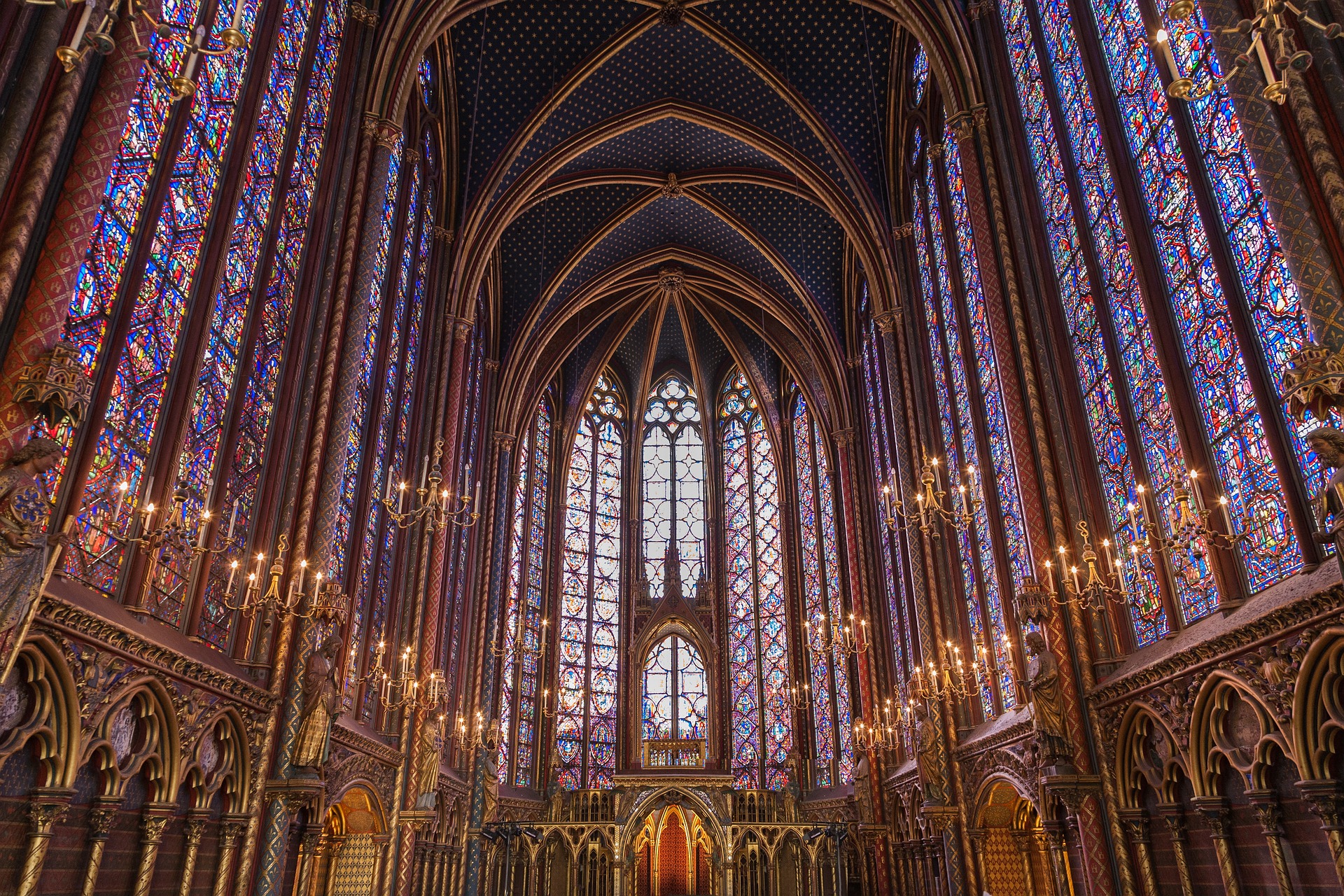
- Location: Paris, France
- Year built: 1242
Located in the heart of Paris and just a short walk away from the city’s most famous cathedral, Notre Dame (spoiler alert: #3 on our list of Most Beautiful Cathedrals in the World), Saint Chapelle features the most beautiful display of stained glass artwork we’ve ever seen.
Built by King Louis IX between 1241 and 1248 in order to house the Holy Relics of the Passion, this gothic masterpiece was a royal chapel within the complex of the Palais de la Cite.
6.) The Cathedral of Santa Maria del Fiore
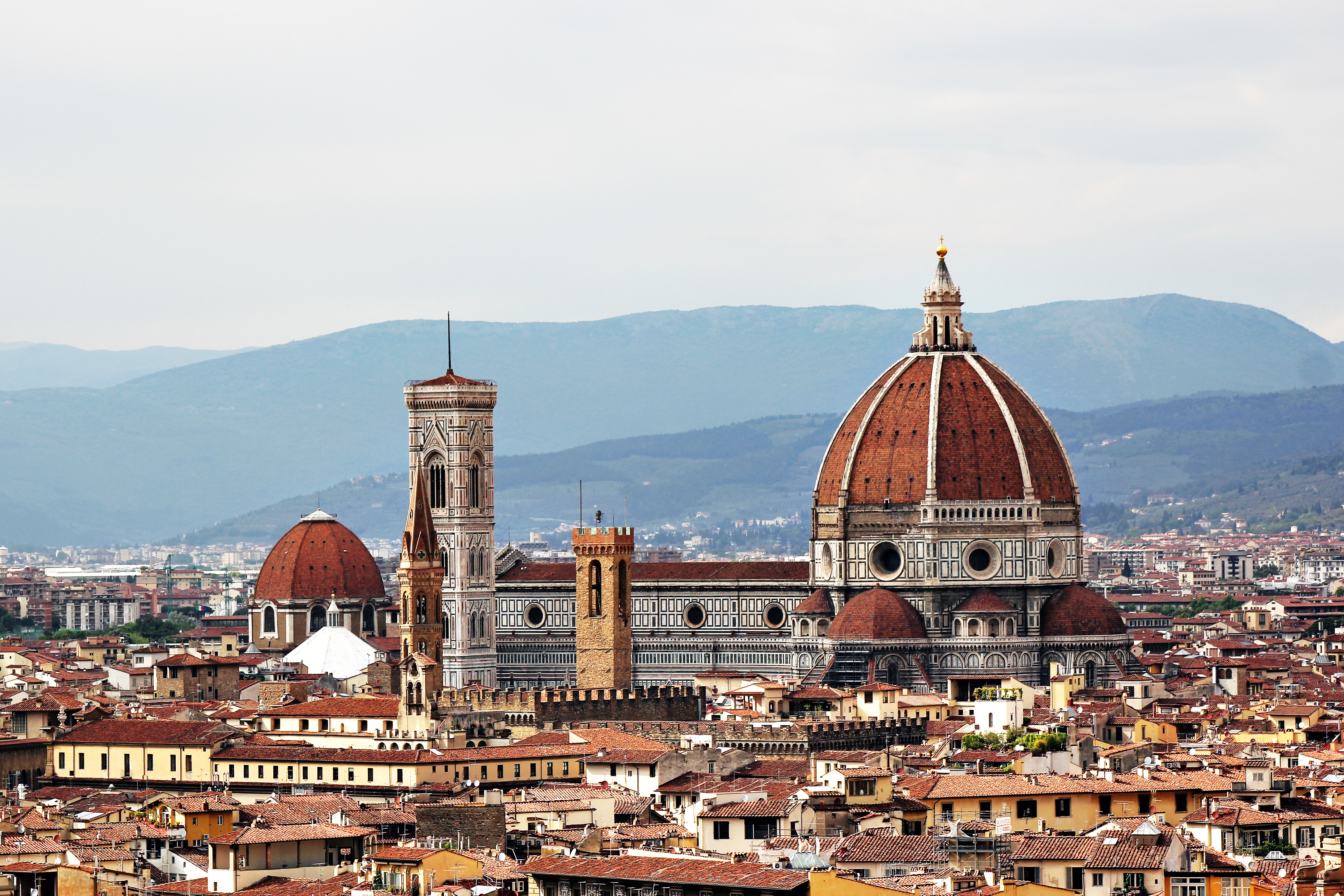
- Location: Florence, Italy
- Year built: 1296
Florence’s Cathedral sits in PiazzaDuomo, which is located in the historic centerof Florence. While many know the cathedral as Il Duomo, its real name is La Cattedrale de Santa Maria del Fiore. It is one of the largest churches in the world and its dome was the largest in the world until surpassed by Saint Peter’s Basilica in Vatican City (spoiler alert: #1 on our list of Most Beautiful Cathedrals in the World) in 1615.
The main cathedral was designed in 1296 by Arnolfo di Cambio, but the dome was designed by a different architect, Filippo Brunelleschi, who won a design competition. Work on the dome began in 1420 and was completed in 1436. Before Brunelleschi submitted his design proposal, construction of the cathedral’s dome had been halted, as many felt it an impossible feat to build a dome of its size without the use of flying buttresses.
5.) La Sagrada Familia
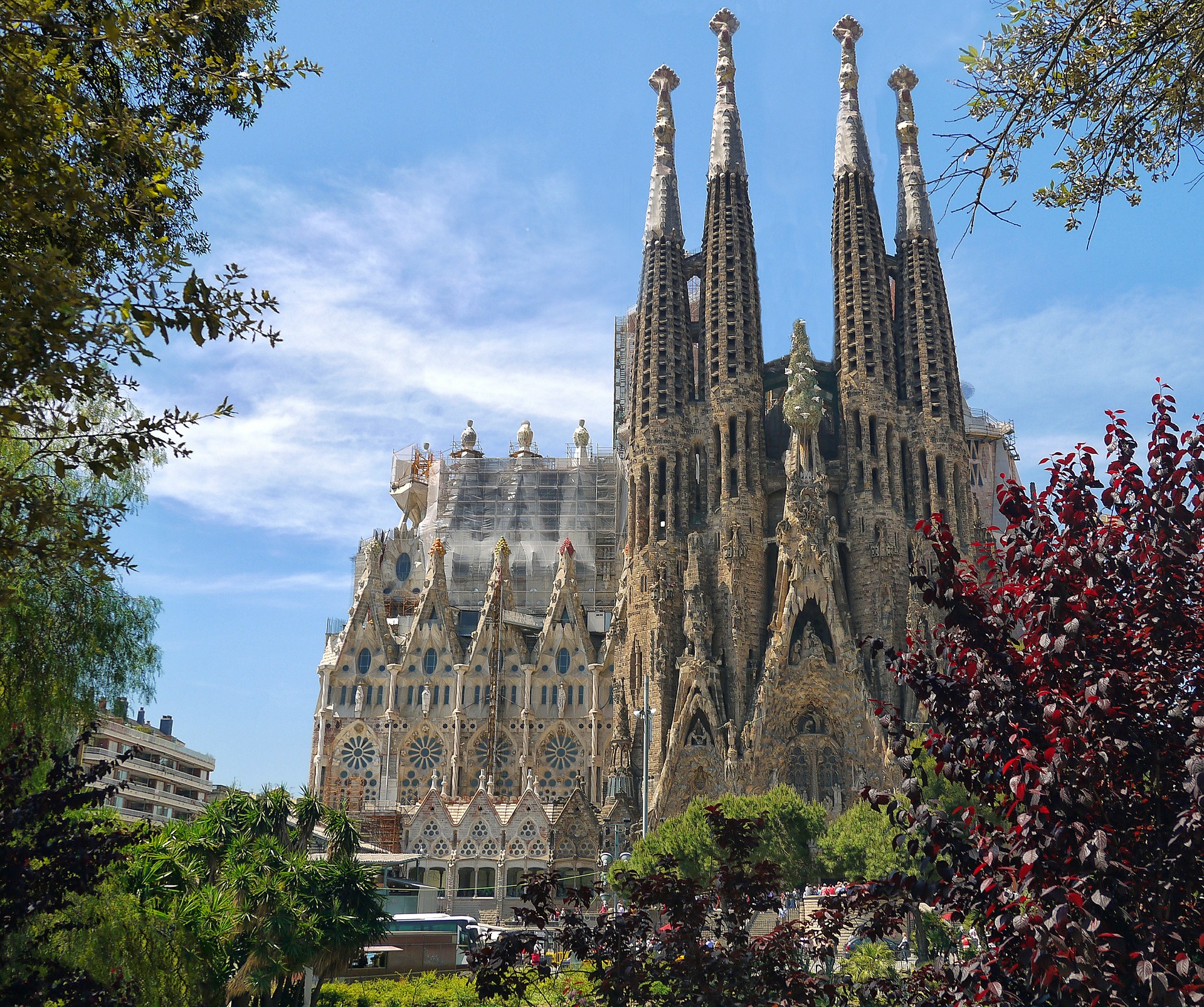
- Location: Barcelona, Spain
- Year built: 1882
Located in the heart of Barcelona, La Sagrada Familia is an Art Nouveau basilica designed by Antoni Gaudi just over 100 years ago, making it the newest church on our list of Most Beautiful Cathedrals (and Churches) in the World. While Gaudi began work in 1883, the building remained incomplete at the time of his death in 1926 and remains that way today.
According to plans, the building will be completed by 2026 to mark the centenary of Gaudi’s death. The basilica is incredibly unique for a Roman Catholic house of worship, reminiscent of a drip-sand castle and a classic example of Gaudi’s use of curves and one-of-a-kind designs. Gaudi’s remains are buried in the crypt of La Sagrada Familia, and the church attracts over three million visitors each year.
4.) Notre-Dame de Reims
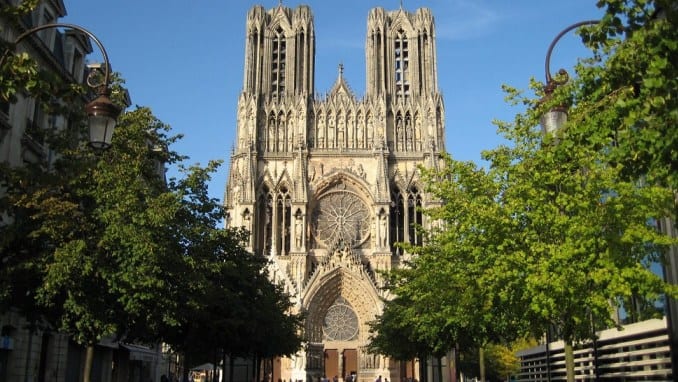
theluxurytravelexpert
- Location: Reims, France
- Year built: 1211
Located in northern France’s Champagne-Ardenne region, Reims is not only home to spectacular wine, but one of France’s most spectacular cathedrals as well: Notre-Dame de Reims.This gothic masterpiece was built on the site of the basilica where Clovis was baptized by Saint Remi, the bishop of Reims, in AD 496, and was the place for the crowning of numerous French monarchs, including Charles VII — courtesy of Joan of Arc — in 1429. The cathedral was completed at the end of the 13th century, while its west front was a new addition, added in the 14th century.
3.) Notre Dame
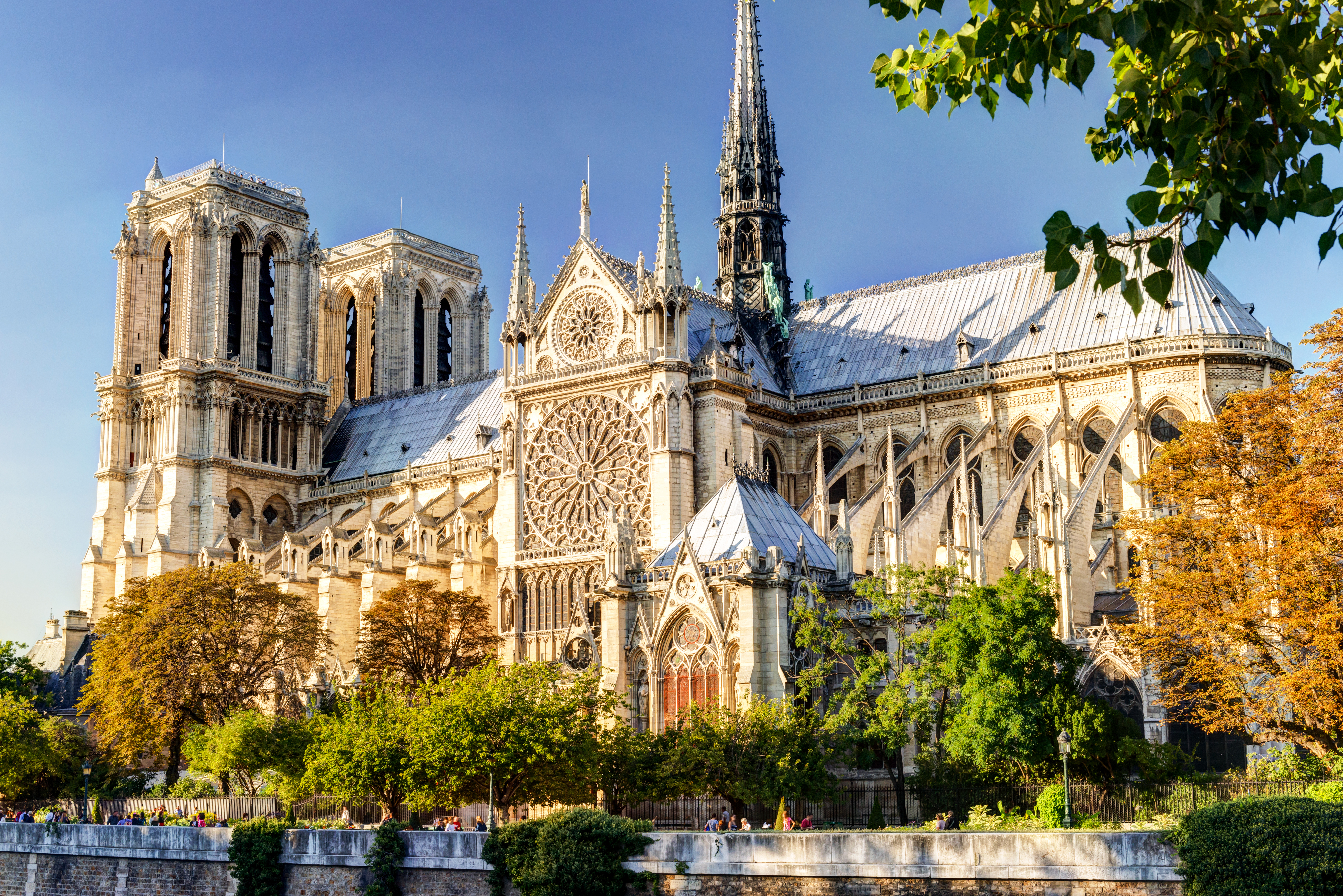
Location: Paris, France
Year built: 1163
Arguably the most famous monument in Paris, Notre Dame is located in the city’s 4th arrondissement and considered one of the best examples of French Gothic architecture in the world, with massive flying buttresses supporting the impressive cathedral. Make sure to climb to the top of the tower for spectacular views of the city.
The tower measure 223 feet high and is famous for its intricate gargoyles and as the haunt for Victor Hugo’s Quasimodo, the Hunchback of Notre Dame.
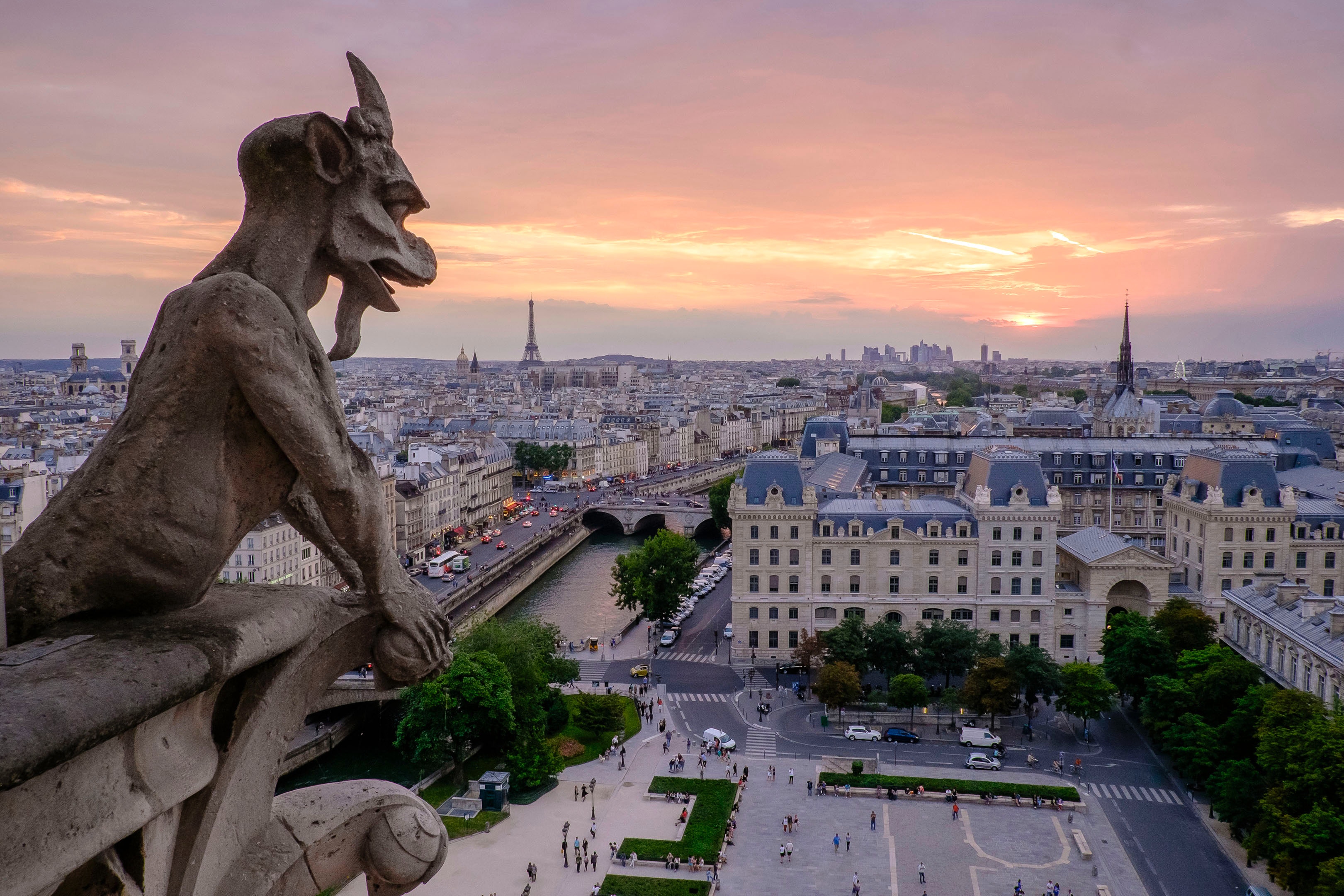
- Construction began in 1163 and was completed in 1345. During the French Revolution in the 1790s the cathedral suffered much damage but was reconstructed in the 19th century.
- Napoleon Bonaparte was crowned Emperor at Notre Dame in 1804.
2.) Basilica San Marco, Venice, Italy
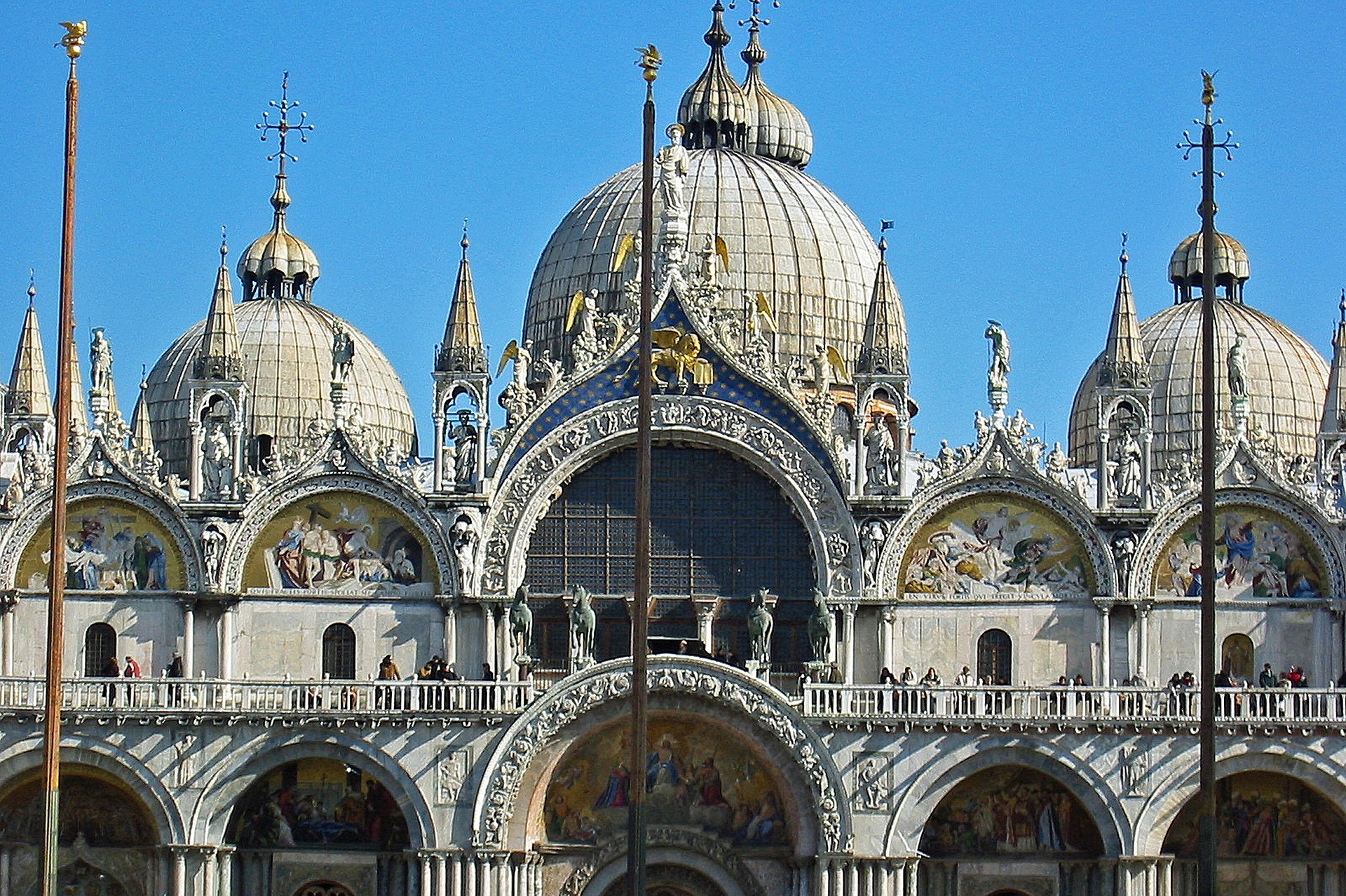
- Location: Venice, Italy
- Year built: 1092
Named after Venice’s patron saint, La Basilica San Marco (full name The Patriarchal Cathedral Basilica of Saint Mark) is located in Saint Mark’s Square and is a mix of Byzantine and western architectural styles with mosaic-covered domes. Adjacent to and connected to Doge’s Palace, it was originally the chapel of the Doge, and has only been the city’s cathedral since 1807.
1.) St. Peter’s Basilica
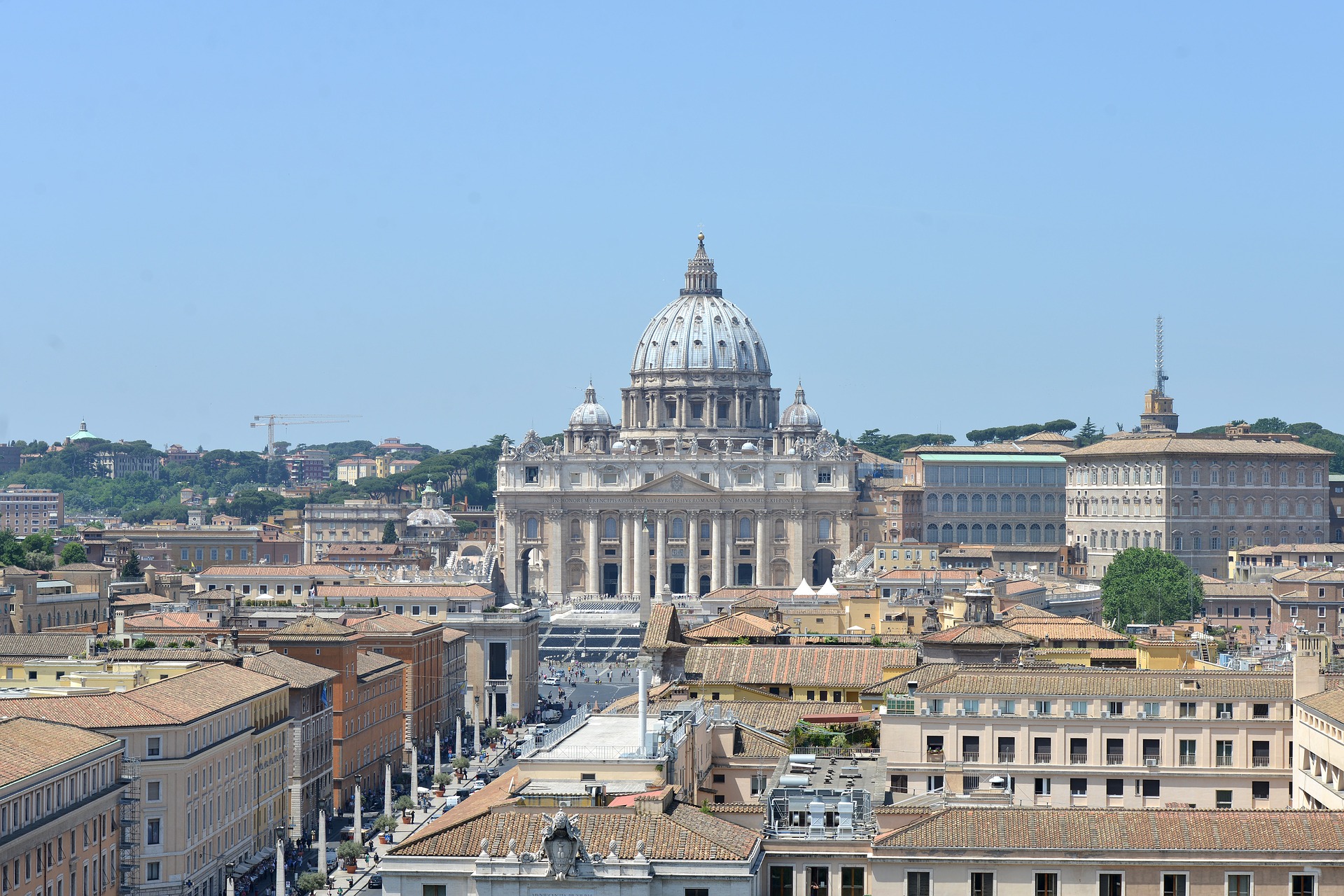
Location: Vatican City, Italy
Year built: 1506
Contrary to what many believe, Vatican City is not a landmark in Rome — it is actually its own country (but yes, it is located within the boundaries of Rome), and in fact the smallest independent country in the world. The capital of the Catholic Church and the seat of the Pope, it should come as no surprise that Vatican City’s main basilica, Saint Peter’s, tops our list of the Most Beautiful Cathedrals (and Churches) in the World.
The Vatican church is one of the largest in the world, with a 20,000-person capacity. St. Peter’s is also the location of St. Peter’s tomb, which may account for the name. The basilica was designed by Michelangelo and is one of the most famous examples of Renaissance architecture in existence. Encompassing the tombs of the popes and the treasury of church ornaments, the basilica’s interior is absolutely breathtaking.
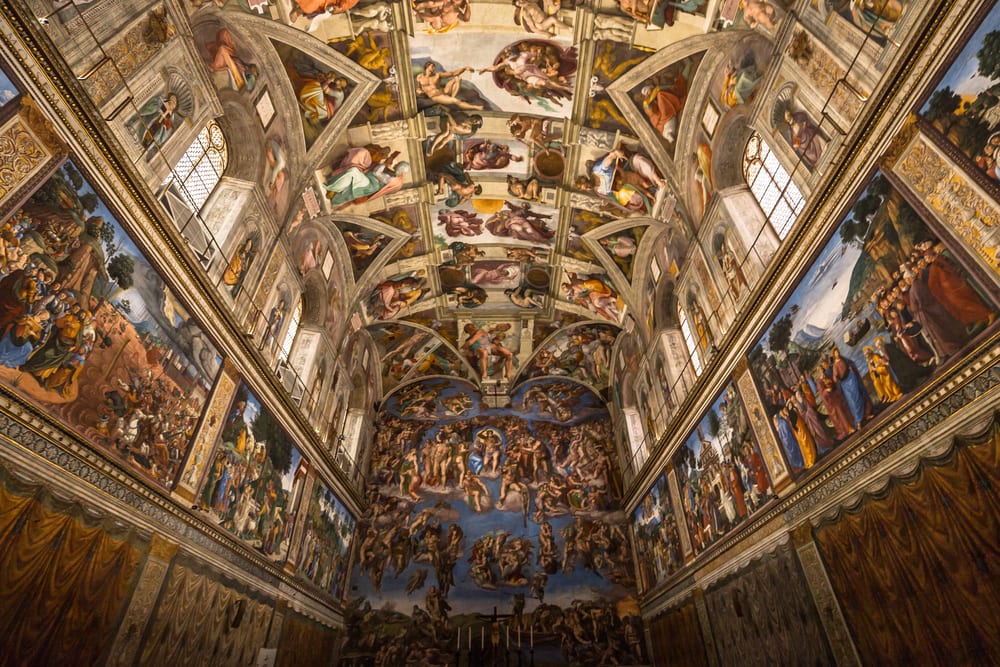
theculturetrip
Make sure to visit the Sistine Chapel as well and take in the beautiful frescoes that tell the story of man. Painted by Michelangelo over a span of approximately 4 years, the 500-year-old ceiling is considered one of the world’s greatest treasures and most famous for it’s depiction of the creation of Man.
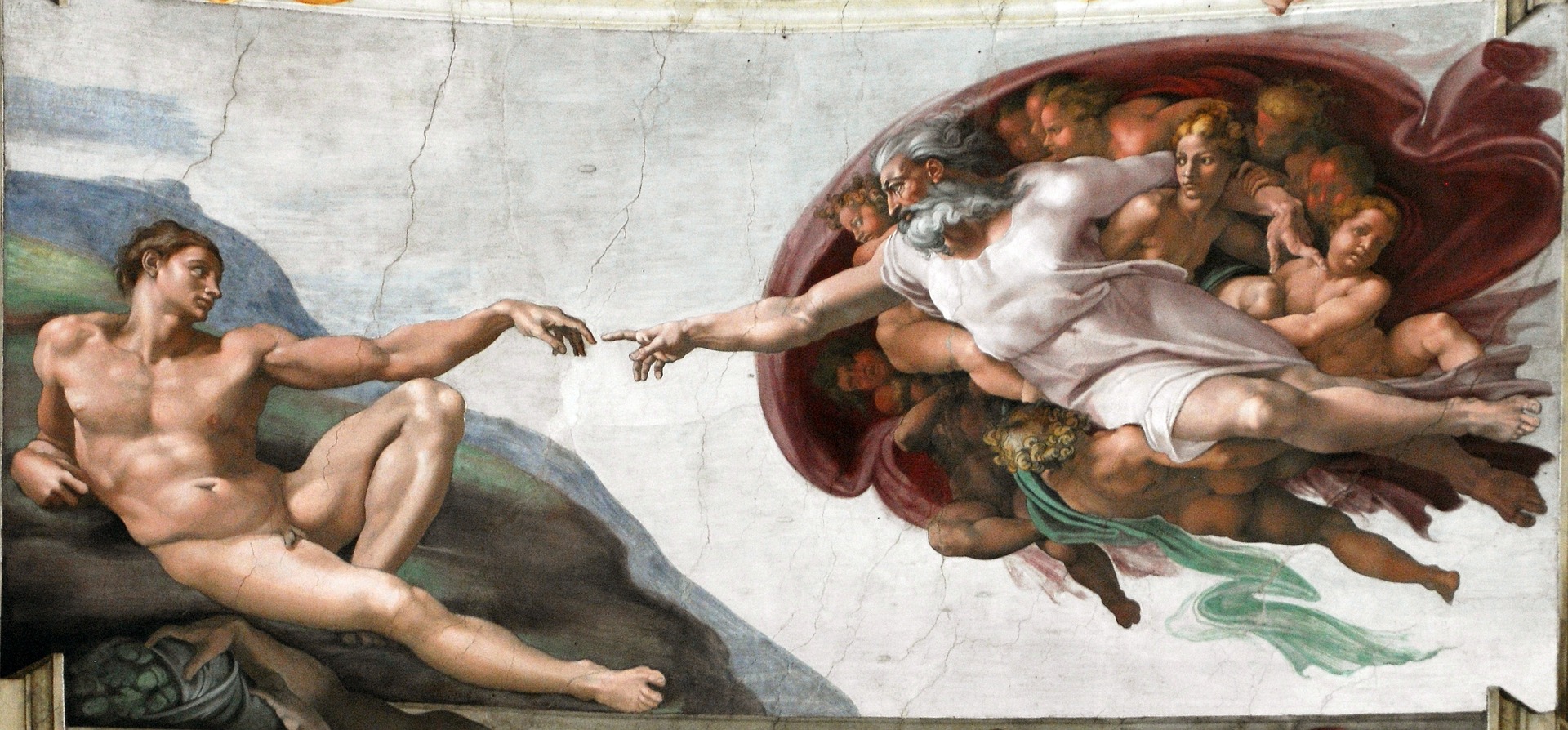
Did we miss one? With over 3,000 to choose from, it certainly was hard to narrow down our favorites. Tell us what your favorite cathedral or church is in the comments below!
